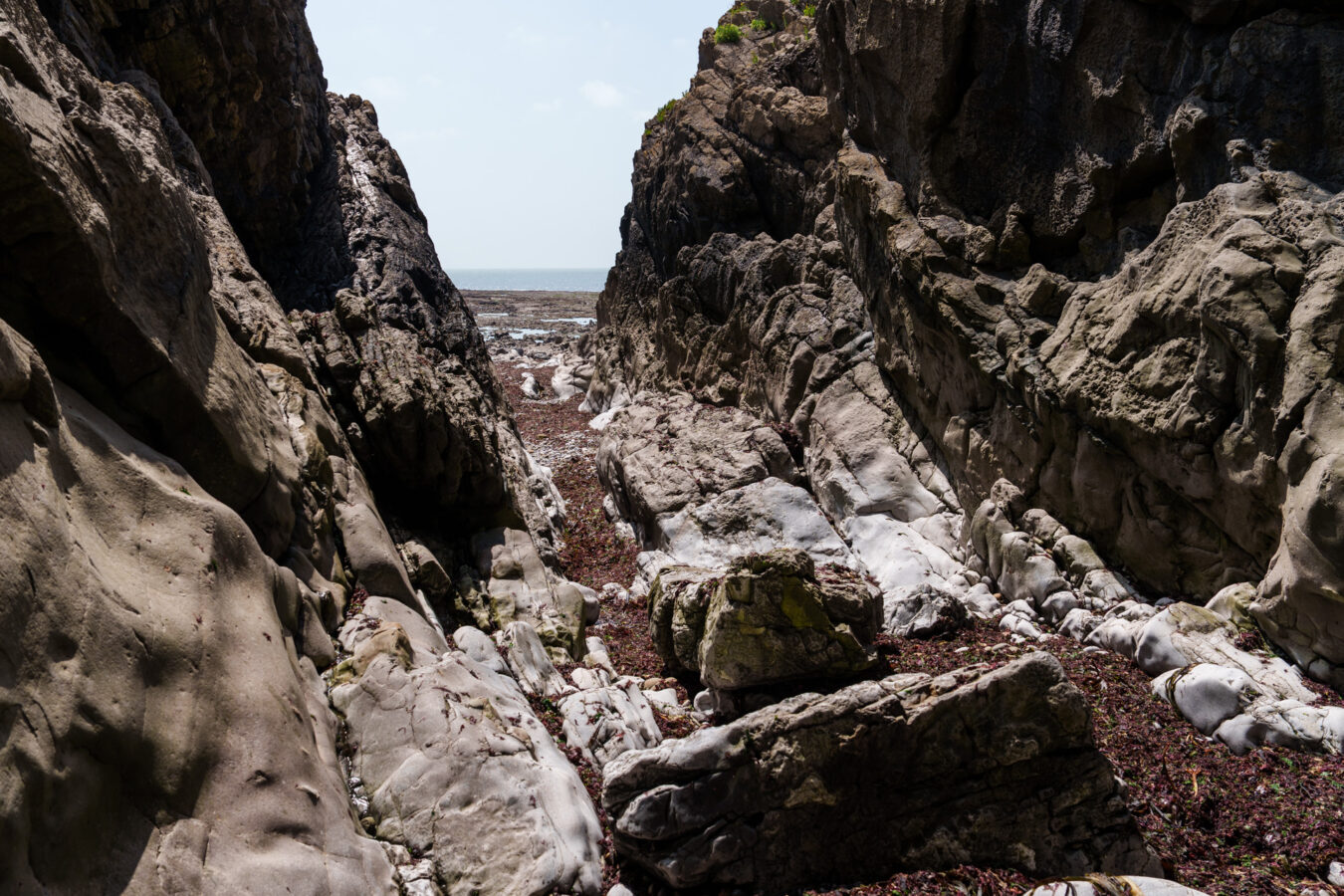This year, I finally took the time to visit the Gower National Landscape in the south of Wales, just next to the vibrant city of Swansea. Together with my family, we based ourselves in The Mumbles for a week and explored the towns and stunning sceneries all around the peninsula.
On the to-explore list I had prepared before leaving was a curious cave nestled in the cliffs at the southern end—one steeped in legends and history.
One morning, I drove to the village of Port Eynon in search of this curious and not-so-easy-to-reach marvel of the Gower coast. I met a few other adventurous visitors along the way, all searching for the same thing.
In this article, I’ll share all the details you need to find Culver Hole, including a step-by-step guide with images to help you get there safely. And if you subscribe to our free newsletter, you can download a mobile-optimised PDF guide—or a GPX file if you use a hiking navigation app.
IN A NUTSHELL
Culver Hole
How long is it? The walk is just over a mile long and takes roughly 40 minutes to reach the destination. However, the final section involves rocky, uneven terrain and requires care—so I would allow about an hour in total, plus a similar amount of time for the return.
How easy is it? The first part of the walk, which goes uphill, is fairly straightforward. The second part—descending towards the destination—involves some light scrambling over large, uneven rocks, slippery seaweed and small but sharp sandstone pools. Be sure to visit at low tide, and give yourself plenty of time to return before the water comes in. You’ll want to attempt this walk on a dry day, as wet rocks can make the final section significantly more challenging and slippery.
Can I bring my children? The second part of the walk can be quite difficult for children. As always, you know your youngsters best and what they’re capable of—but I personally wouldn’t recommend this route for children younger than 10.
Accessibility: There’s a rocky path uphill, followed by the rough terrain mentioned above, so this walk is not suitable for people with mobility issues.
Where can I park my car? There is a large pay-and-display car park in Port Eynon, where the walk begins.
Can I get there by public transport? Yes, you can take the 117 bus from Killay or the 118 from Swansea.
Are there any amenities nearby? Yes—there are toilets next to the car park, two EV charging stations, as well as a pub, two cafés, and takeaway shops.
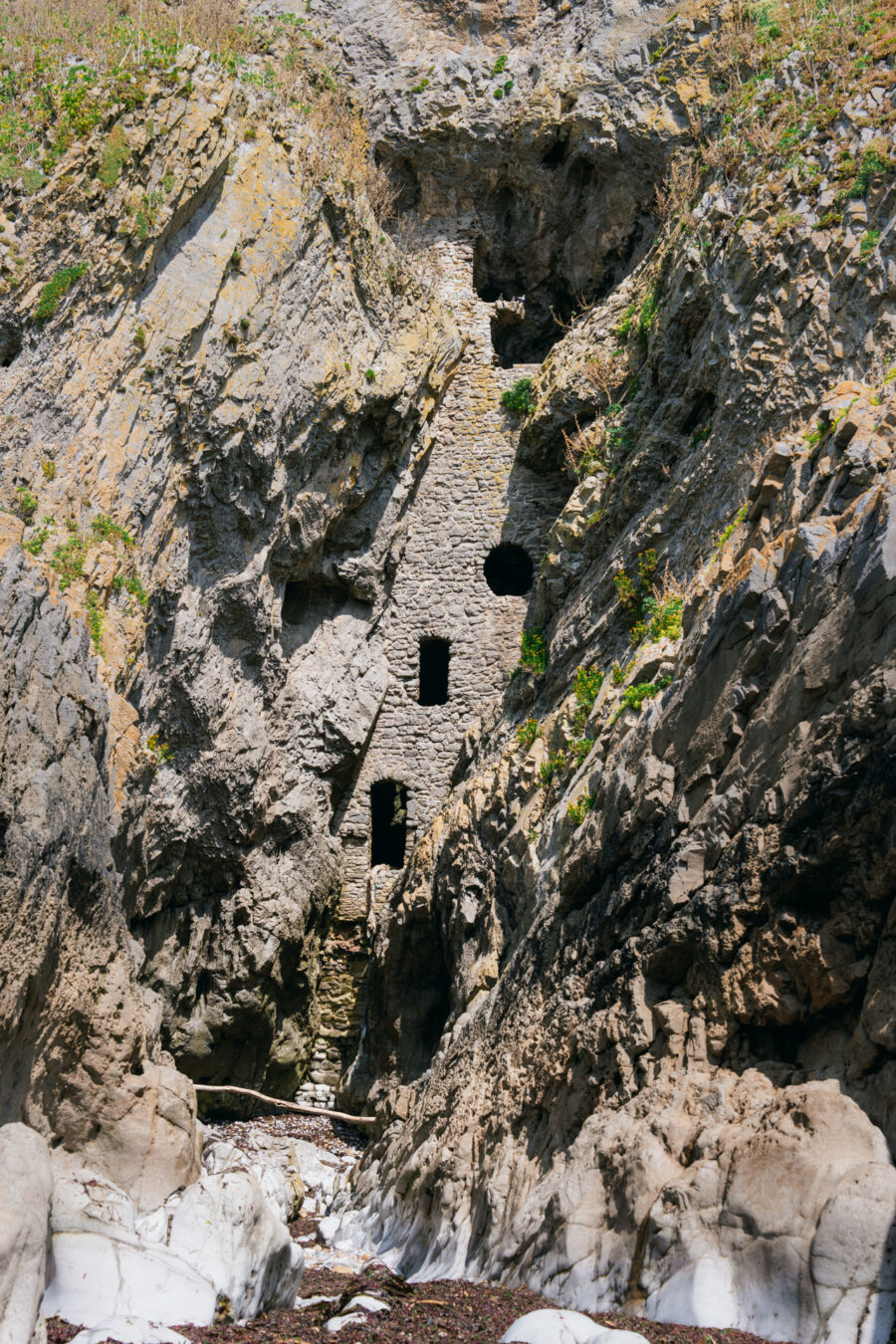
Culver Hole Map and Route
The walk starts from the car park in Port Eynon and involves going through the campsite, making your way to the top of the cliff before descending towards the destination.
You can also choose to walk along the beach, taking advantage of low tide to stay as close as possible to the water and avoid the rock pools, until you see the cave from a distance and head towards it. I saw a few people opting for this route, but regardless of which way you choose, at some point you’ll have to navigate uneven and sharp sandstone, slippery seaweed, and pebbles.
Note that the map below shows the final part of the route as being in the water, but at low tide the waterline is much further back. Make sure to check the tide times and give yourself plenty of time to get there and return, as access to the cave is submerged at high tide. You can’t find Port Eynon’s tides specifically, so use The Mumbles instead – it’s close enough.
Free PDF guide!
- If you subscribe to our newsletter, you’ll get access to our exclusive members’ area, where you can download a mobile-friendly PDF guide and a GPX file of this walk.
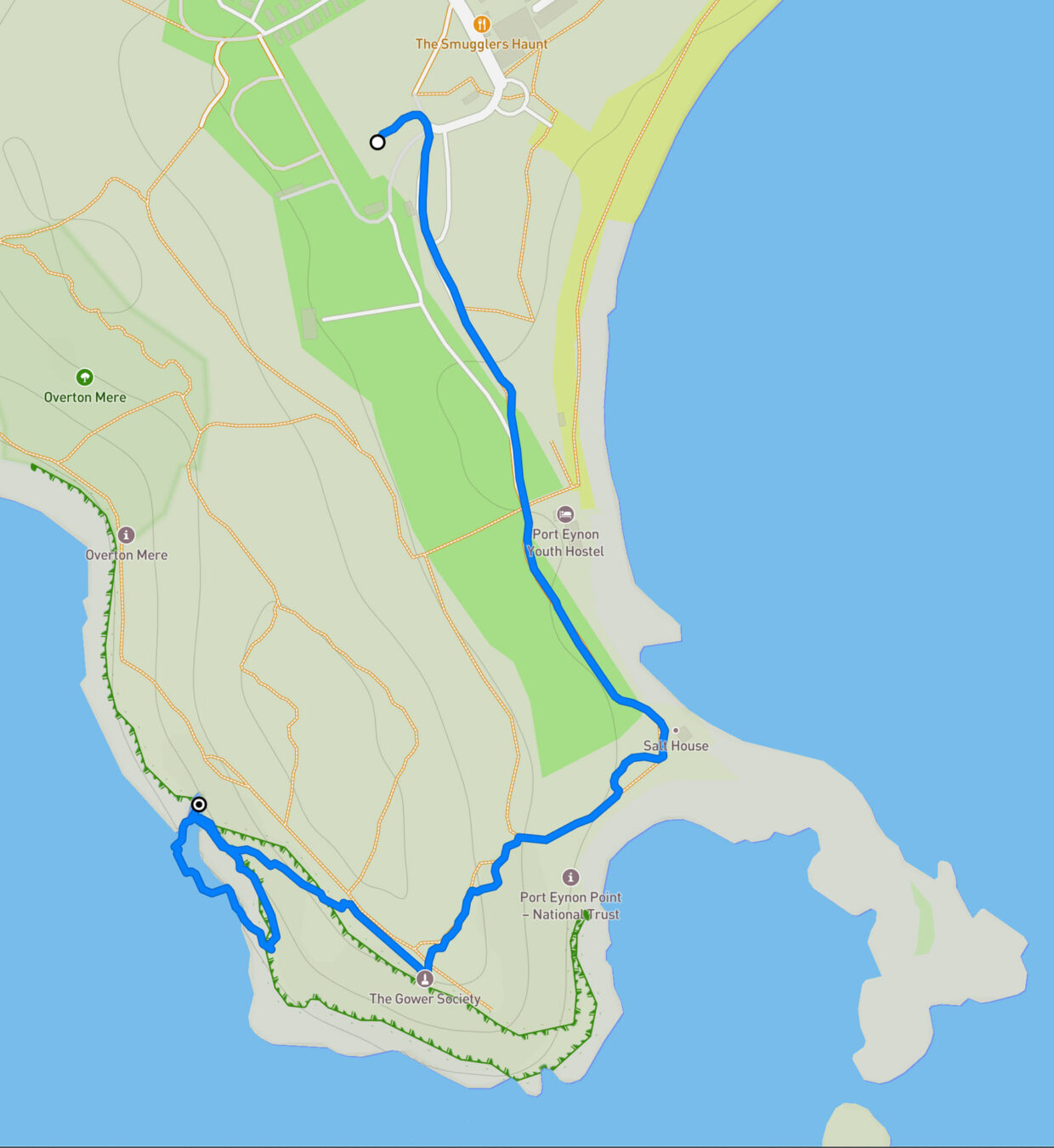
How To Get To Culver Hole
By car: Follow the A4118 west from Killay or Swansea. If you’re coming from The Mumbles, take the B4436 west until it joins the A4118.
By bus: You can take either the 117 from Killay or the 118 from Swansea—both stop in Port Eynon. From The Mumbles, it’s a bit more complicated, as you’ll need to take two buses: the 37 to Killay, followed by the 118. Be aware that there may be a considerable wait between connections. Make sure to check the return times as well. You can find up-to-date timetables and departure points at Traveline.cymru.
By taxi: You could also take a taxi, such as Oyster Cabs from The Mumbles, or use one of the many taxi operators available in Swansea.
The pay-and-display car park in Port Eynon charges £1.50 for one hour, £4.00 for three hours, or £6.00 for all-day parking. Cheaper tariffs apply during the winter months.
There are also two slow 7kW electric vehicle charging points, operated by EVlink.
See car park and starting point on
Google Maps | Apple Maps
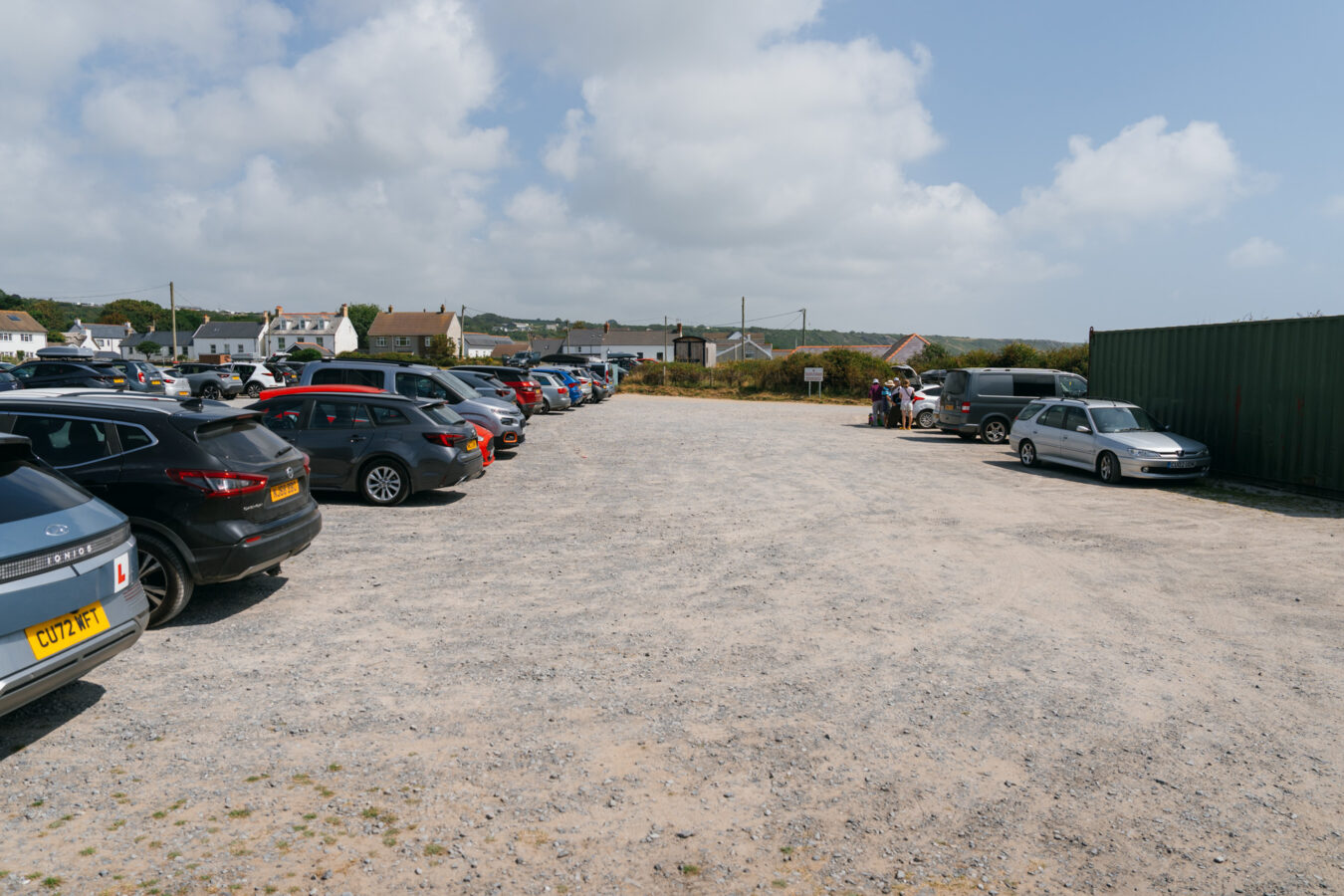
The Hike to Culver Hole – Step by Step Guide
From the Port Eynon car park, take the track heading south towards the Youth Hostel and Skysea Caravan and Camping Site.
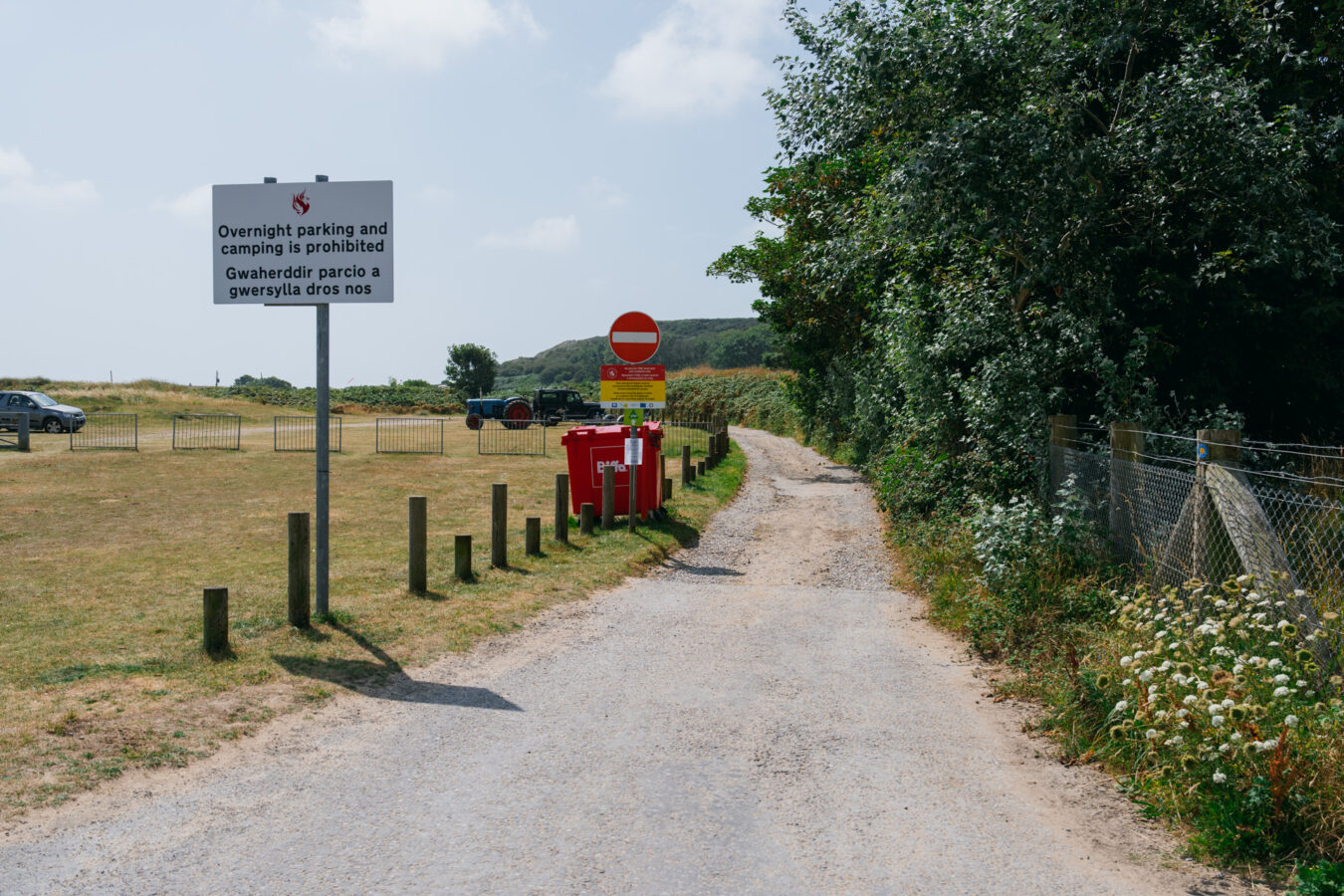
Pass through the gate and continue along the asphalt road to reach the far end of the campsite. Pass another gate and you will see the ruins of the Port Eynon salt house on your left.
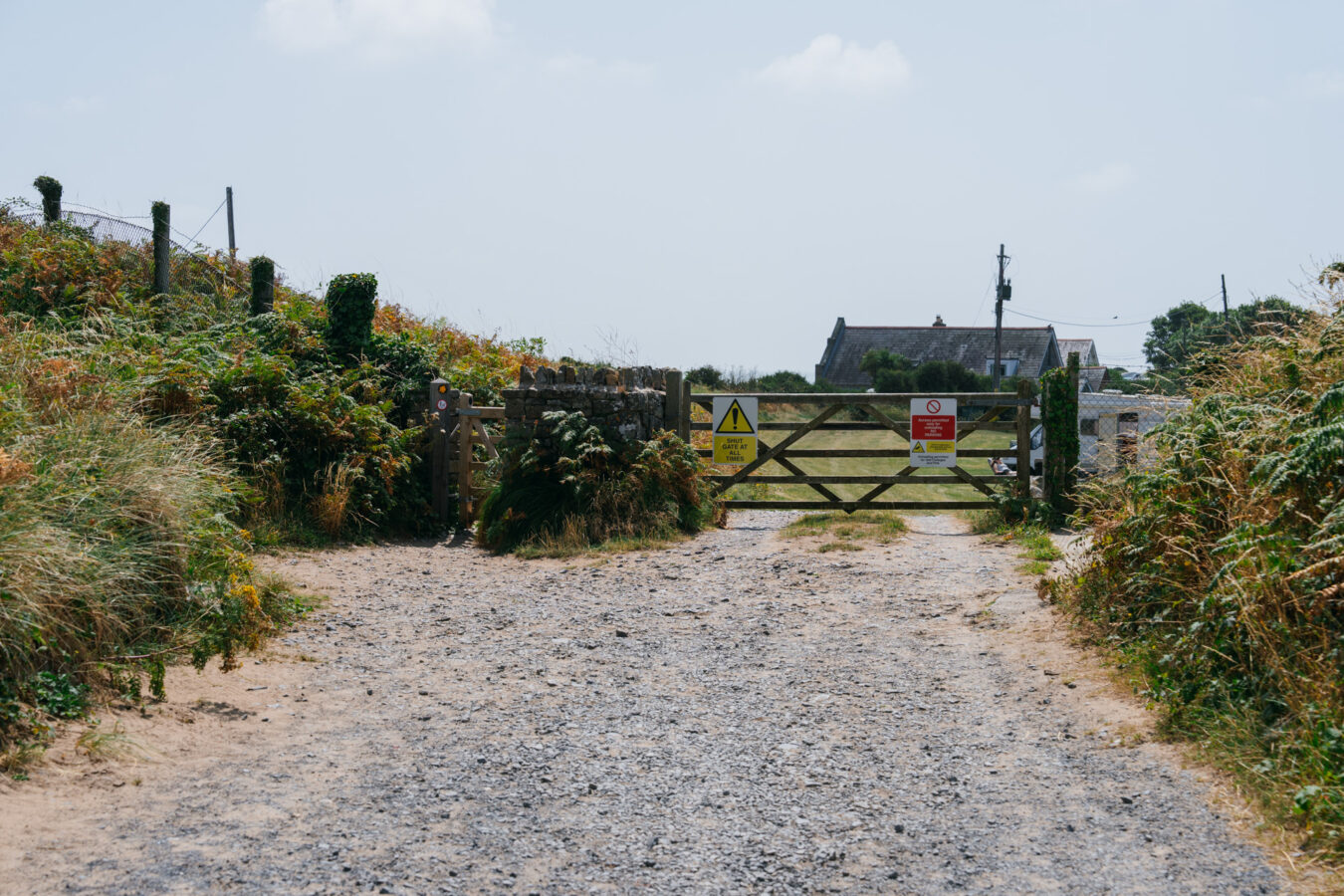
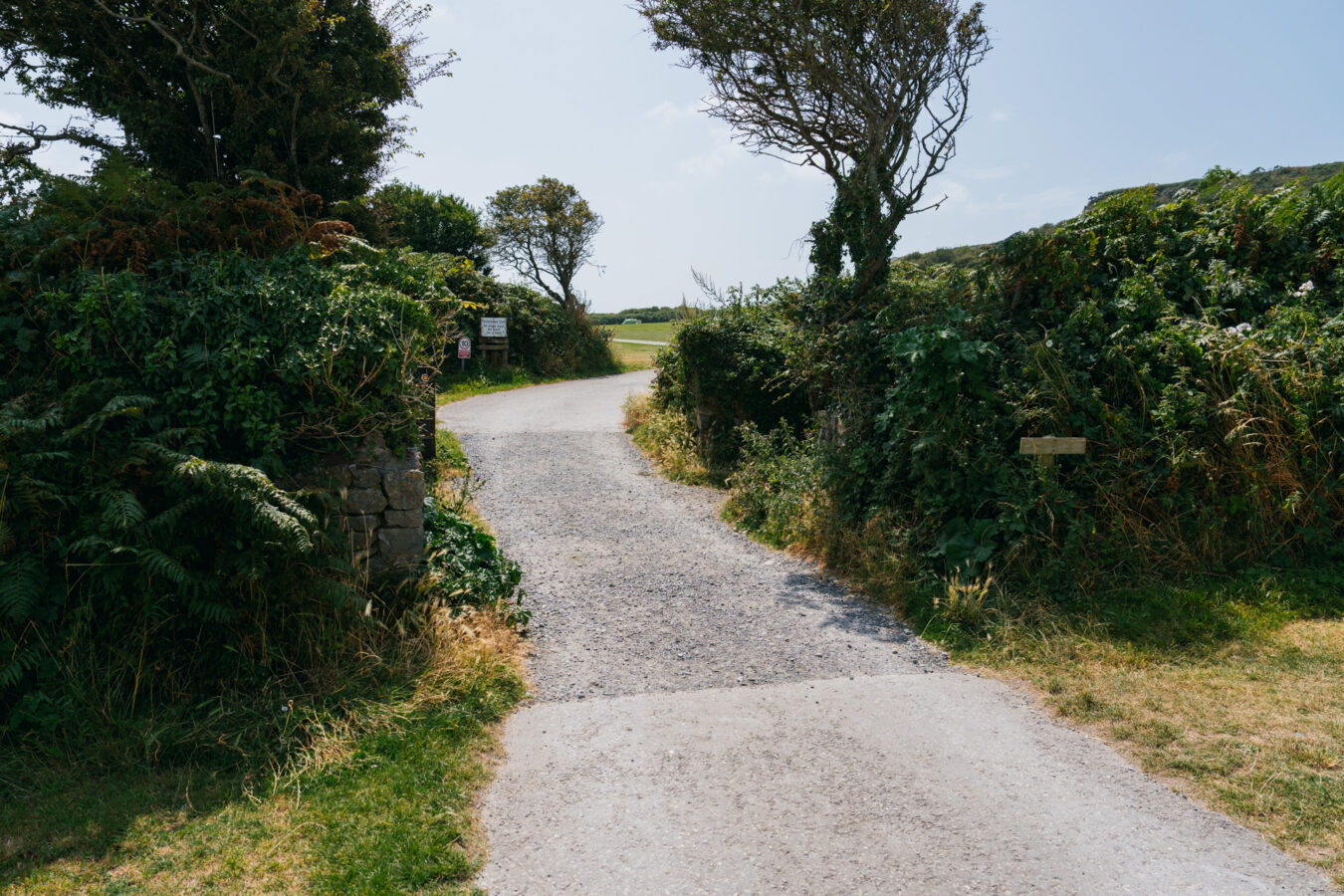
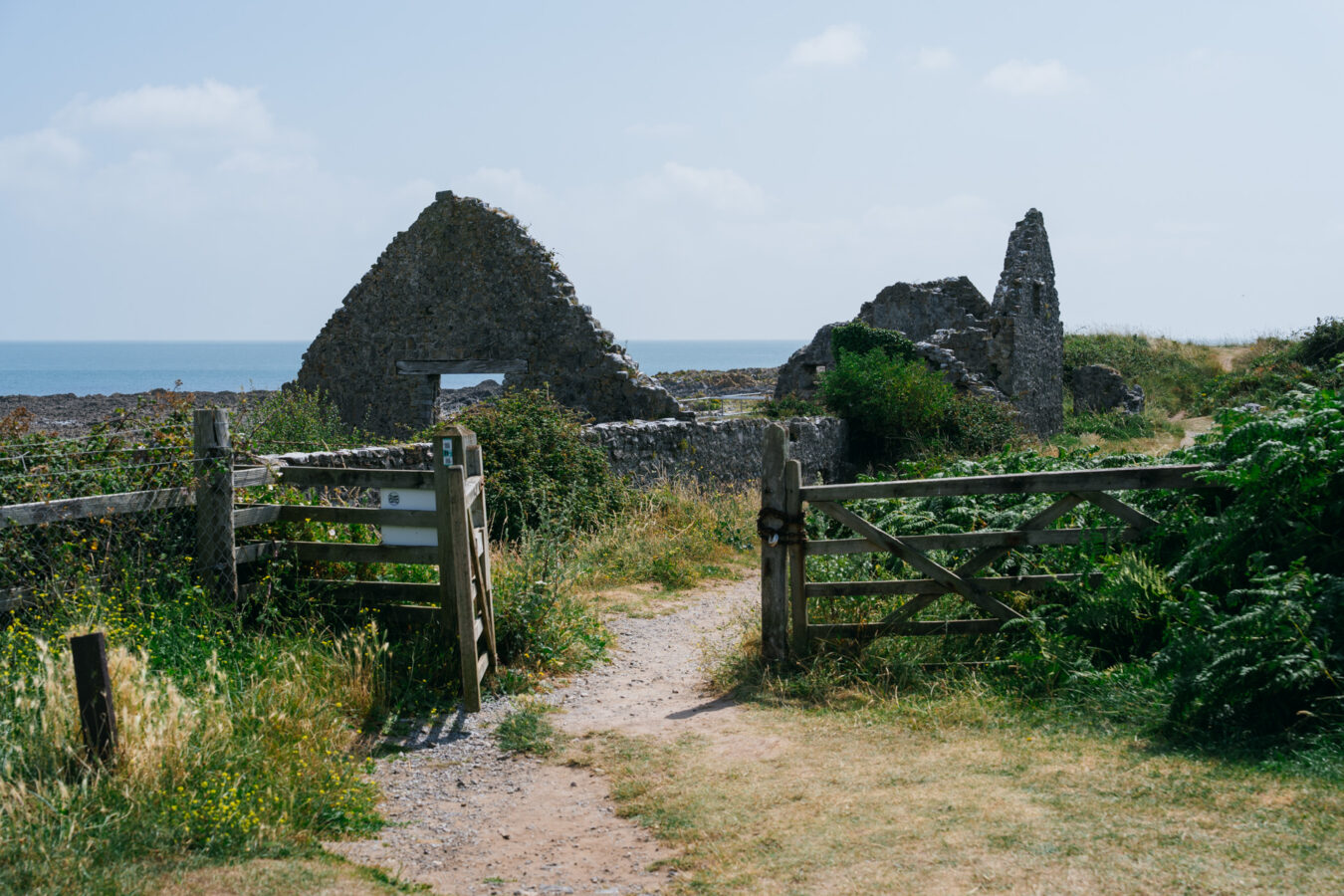
From here, make your way up to the top of the cliff on your right, heading towards the Gower Society memorial stone, which is already visible, protruding from the top of the hill. Take one of the sandy paths, passing through thick vegetation for a short while.
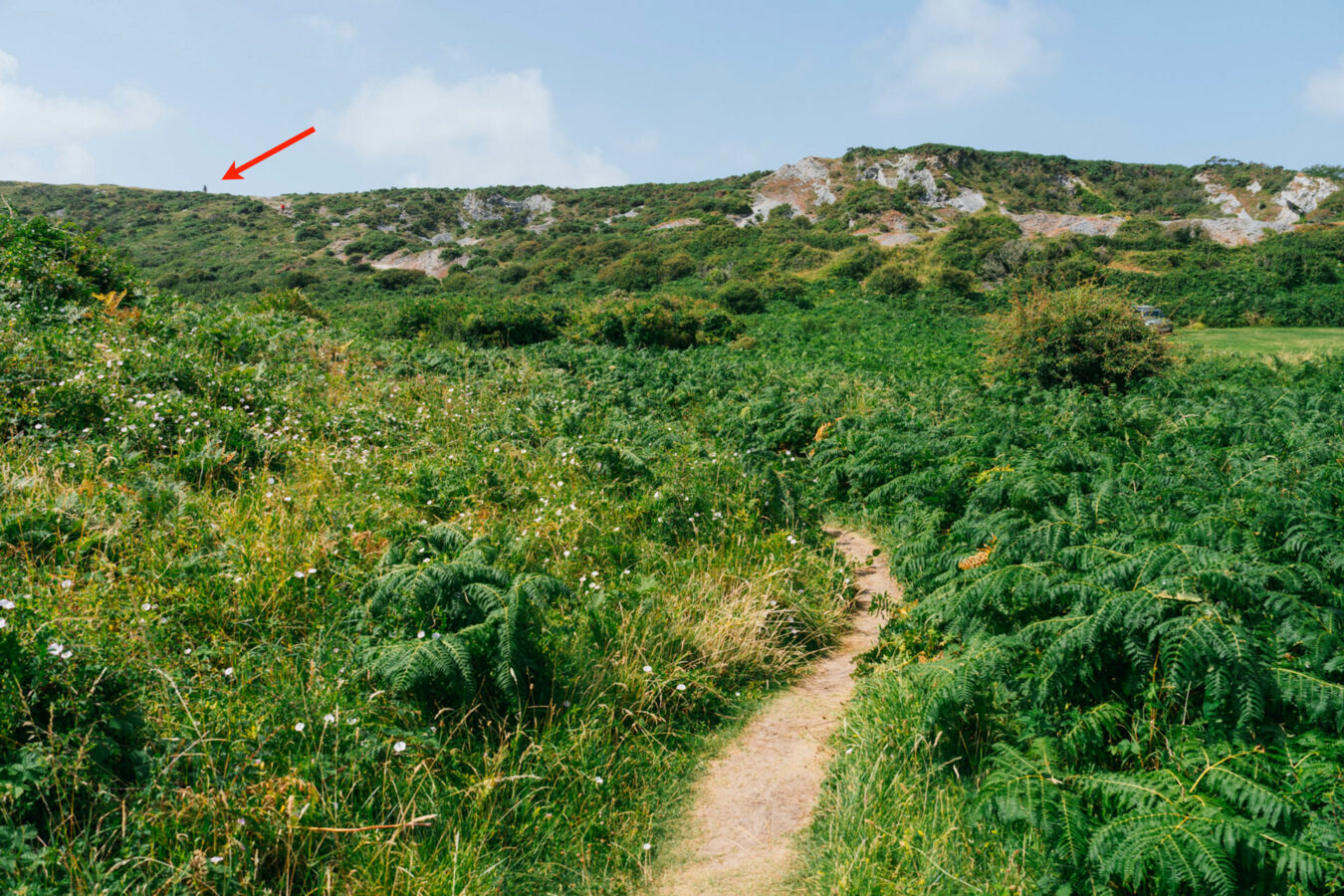
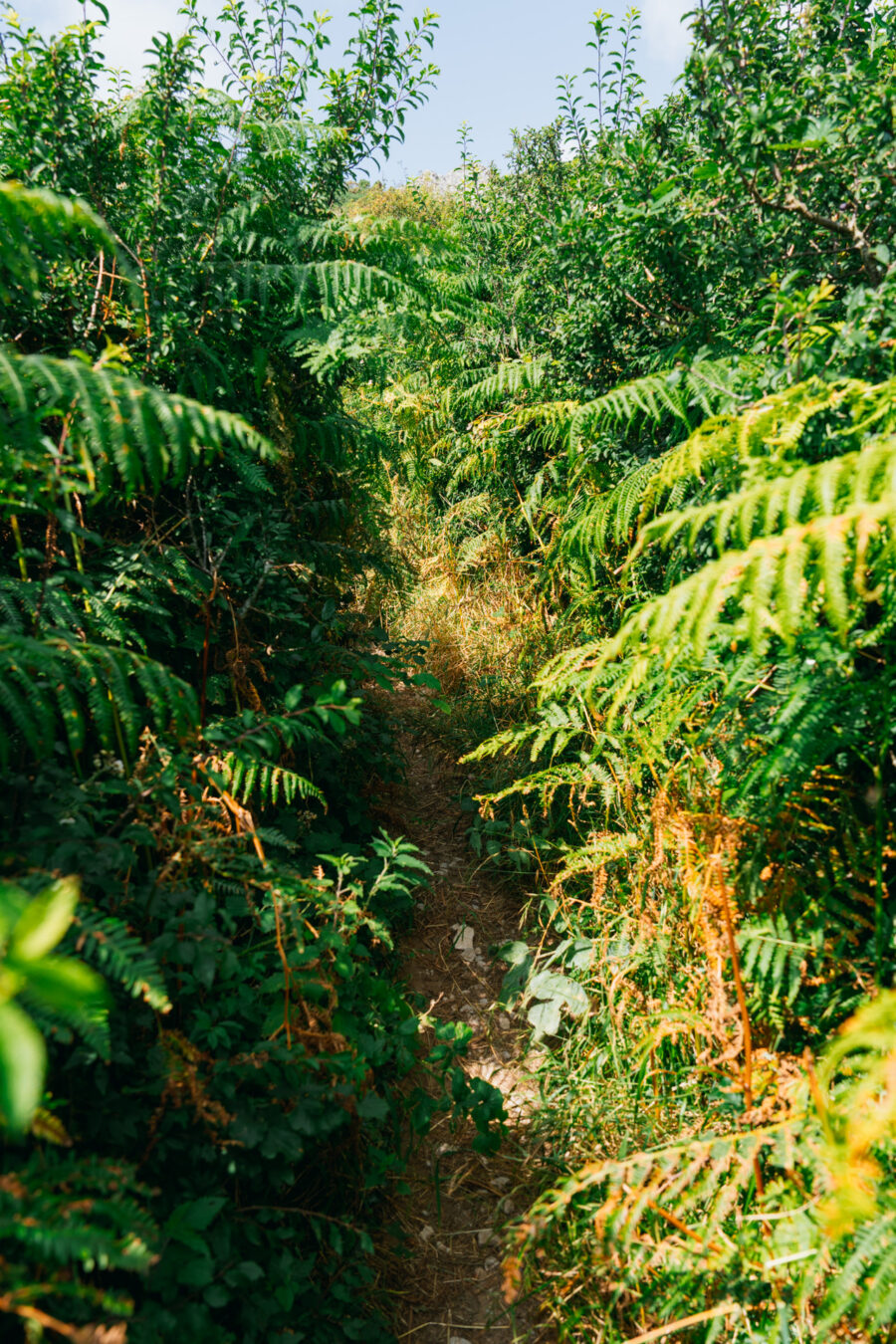
At the fork, take the left path and keep climbing. The trail becomes rockier as you ascend. On reaching the top, enjoy the views around you before heading north-west along the cliff.
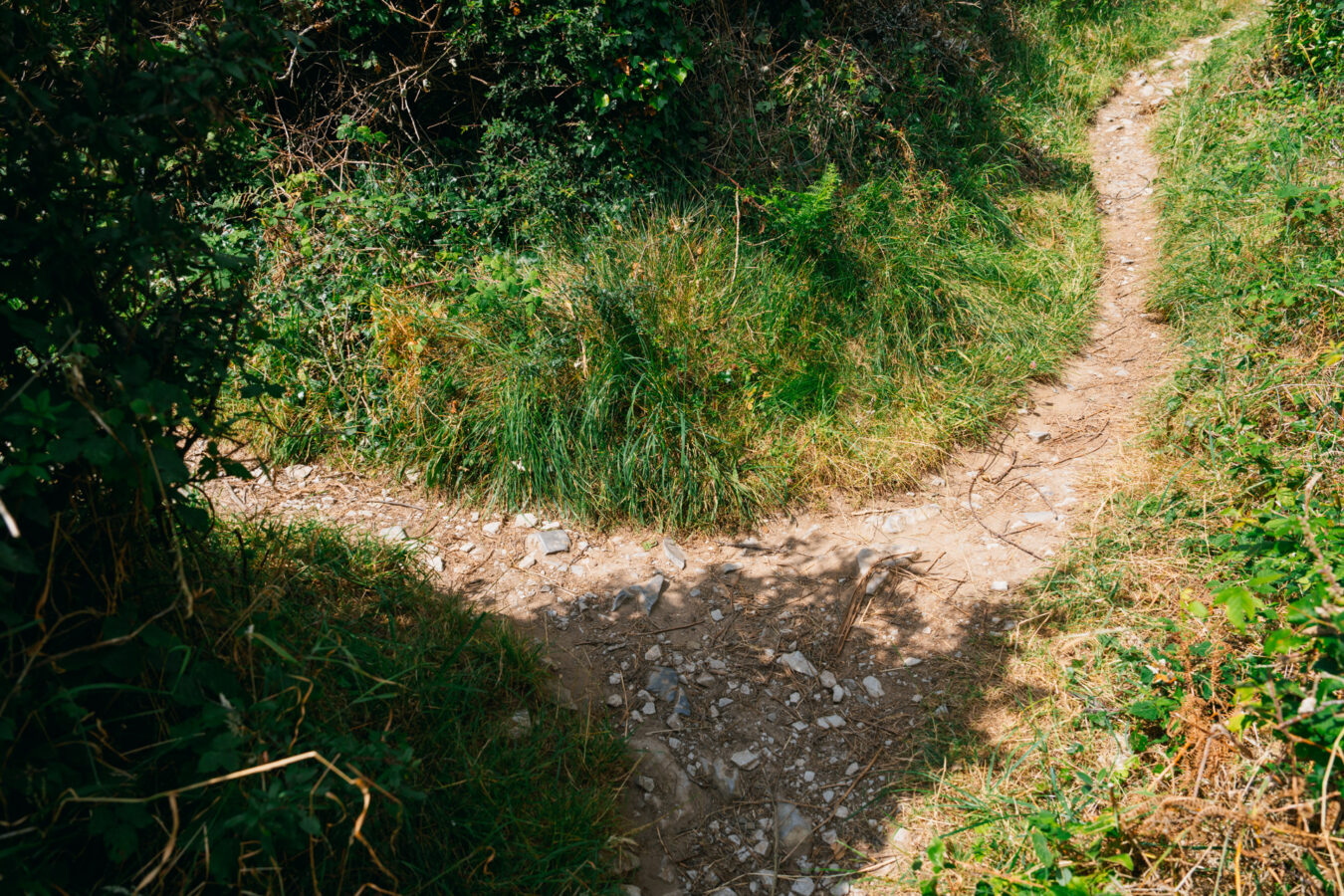
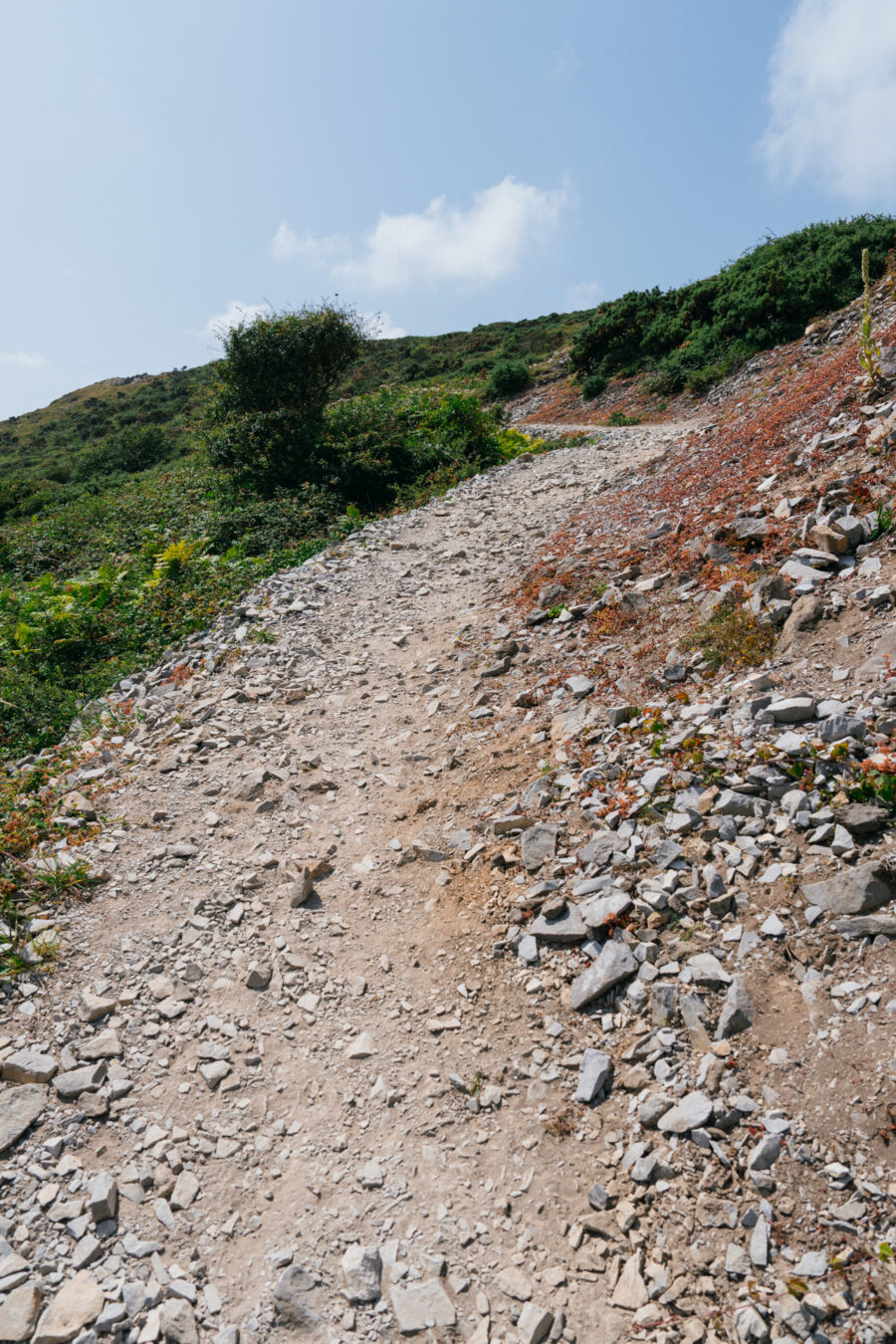
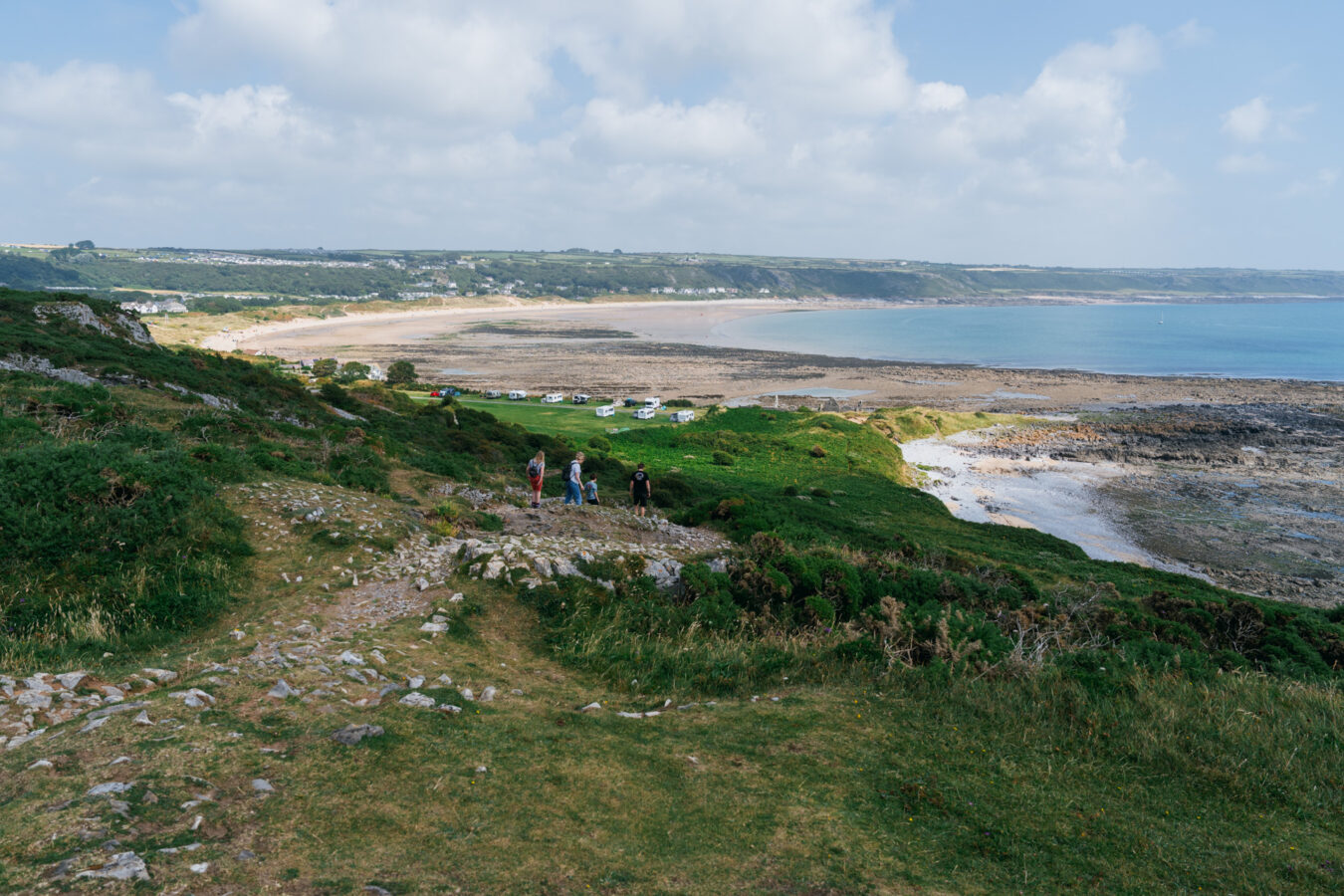
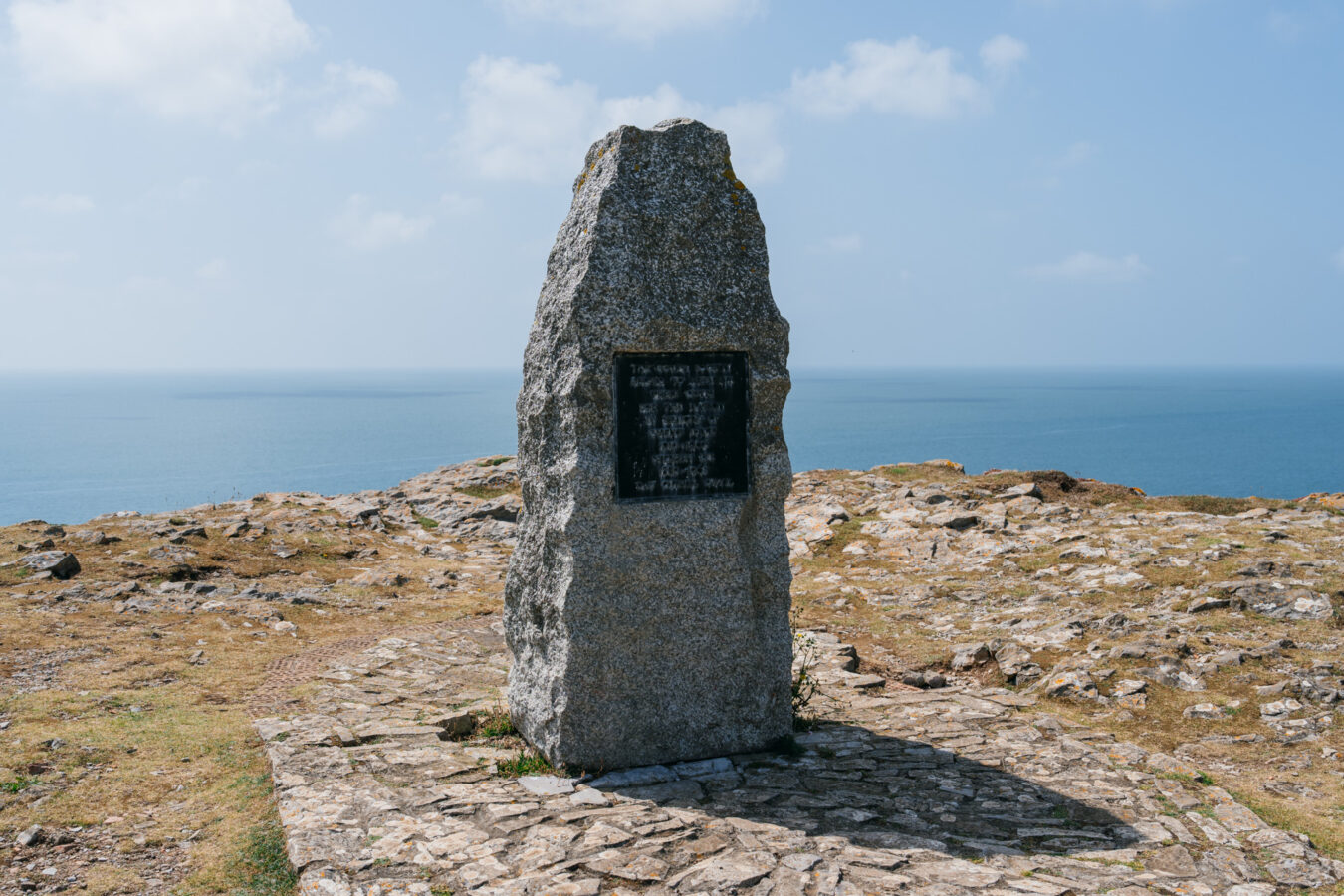
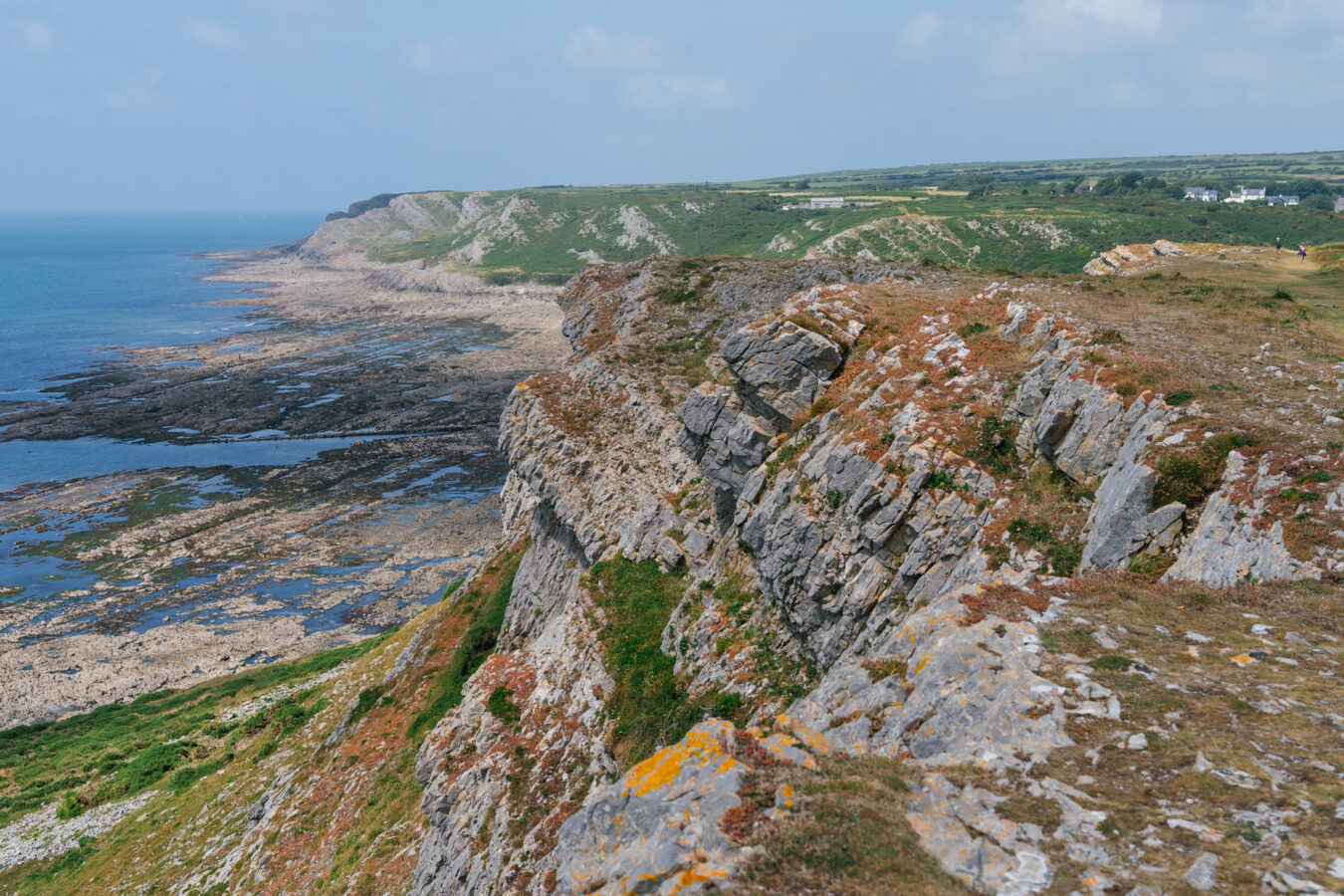
Approximately 100 metres from the memorial, begin your descent on the left along a fairly easy-to-spot path of grass and rocks.
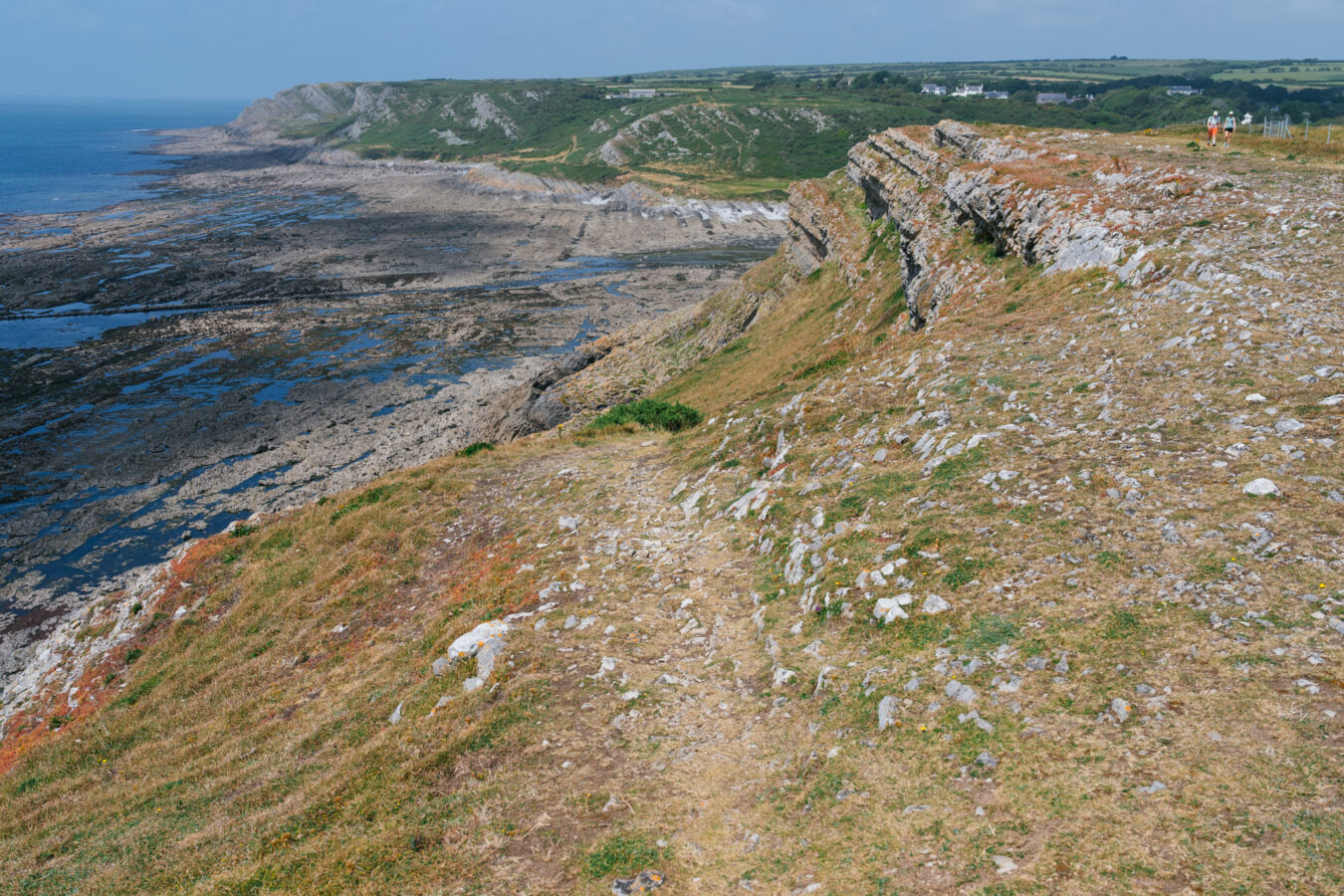
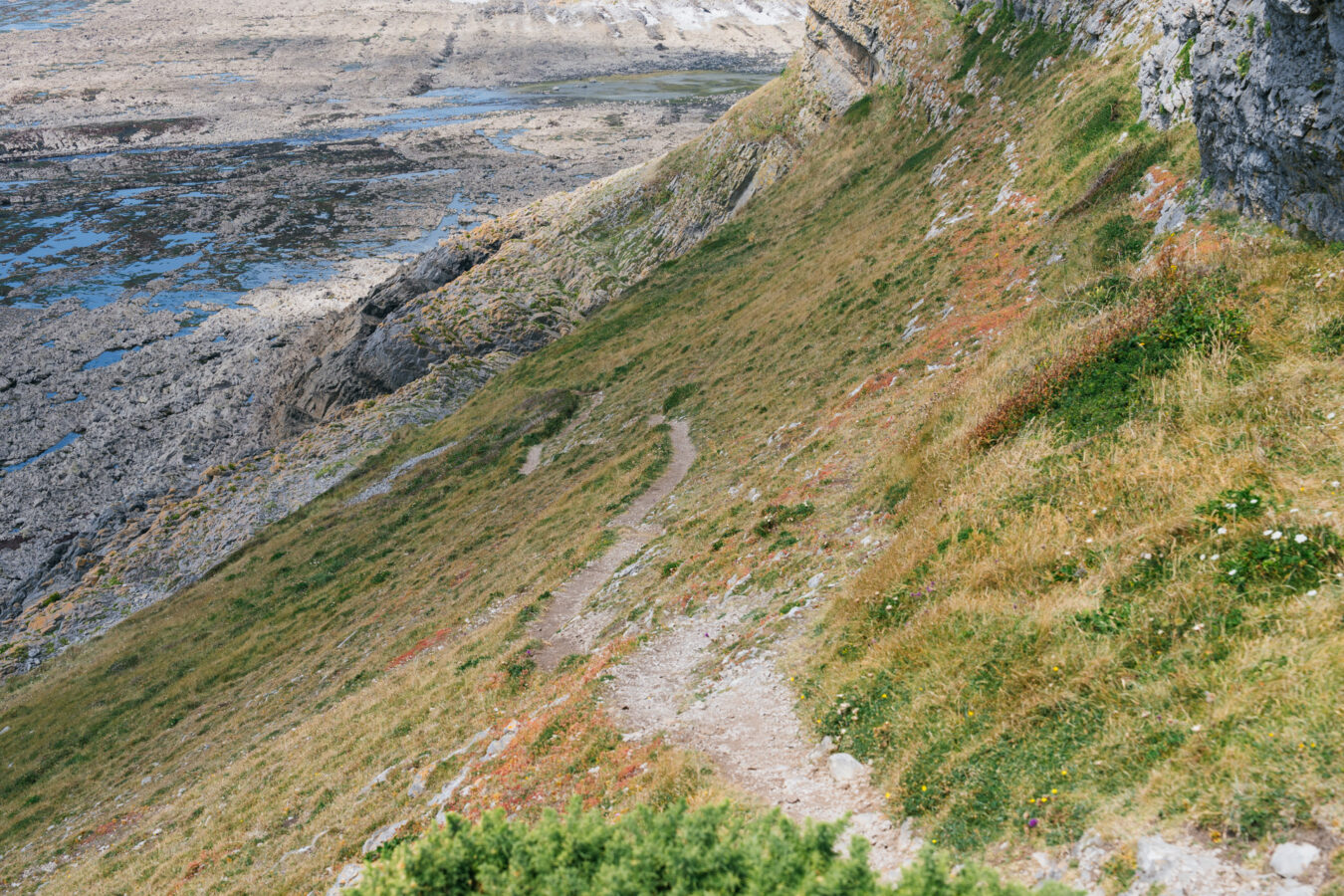

When you approach the rocky formations just above the beach, you can head to your right for about 30 metres to see the cave from above. From here, if you are an experienced climber, you could attempt to descend via a narrow ridge that slopes downward. I have seen someone walk back up this way fairly easily (although going down might be more tricky), but do not attempt it if you are unsure, or if the rocks are wet, as it would be very easy to slip — and it is a sheer drop.
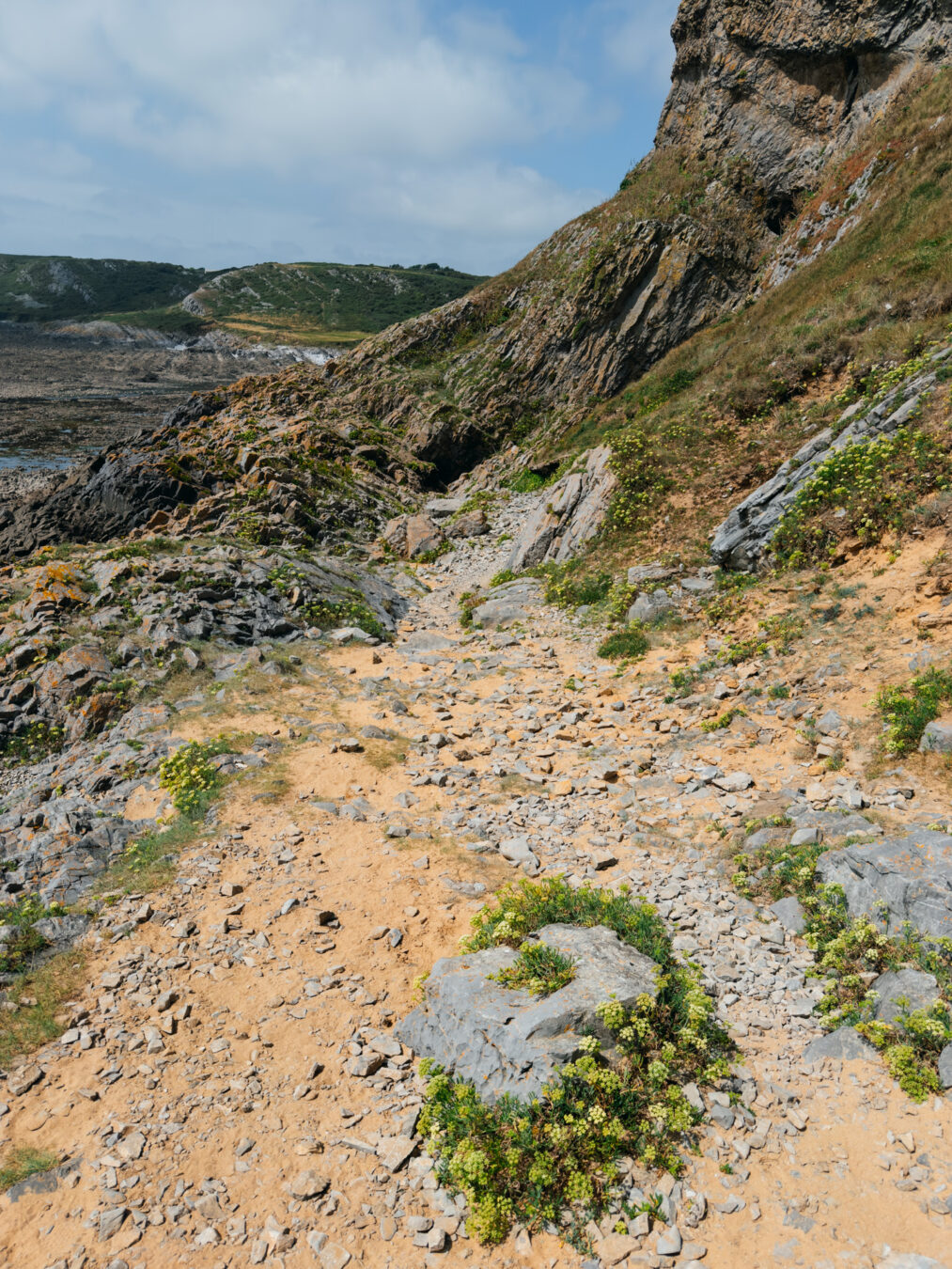
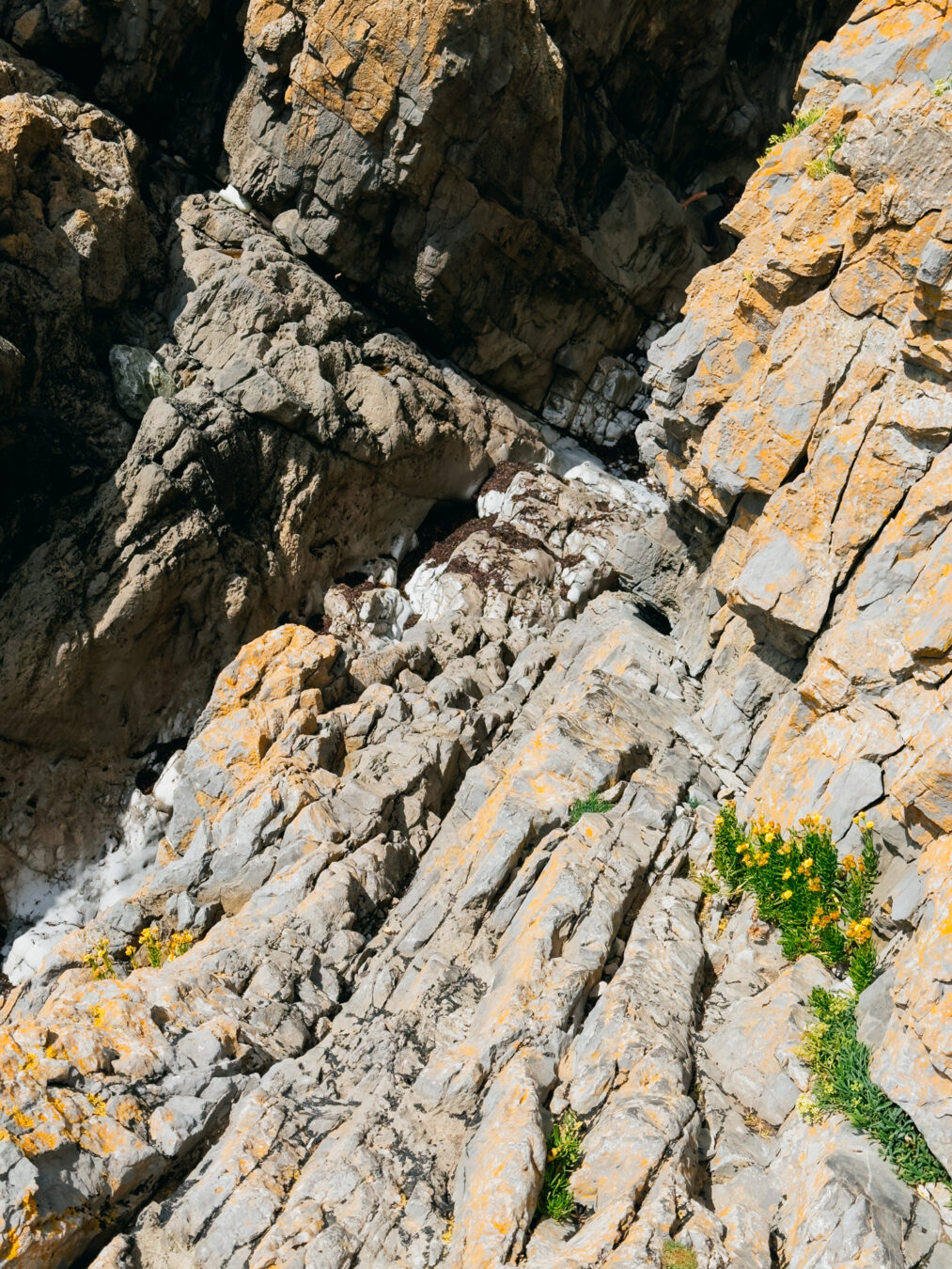
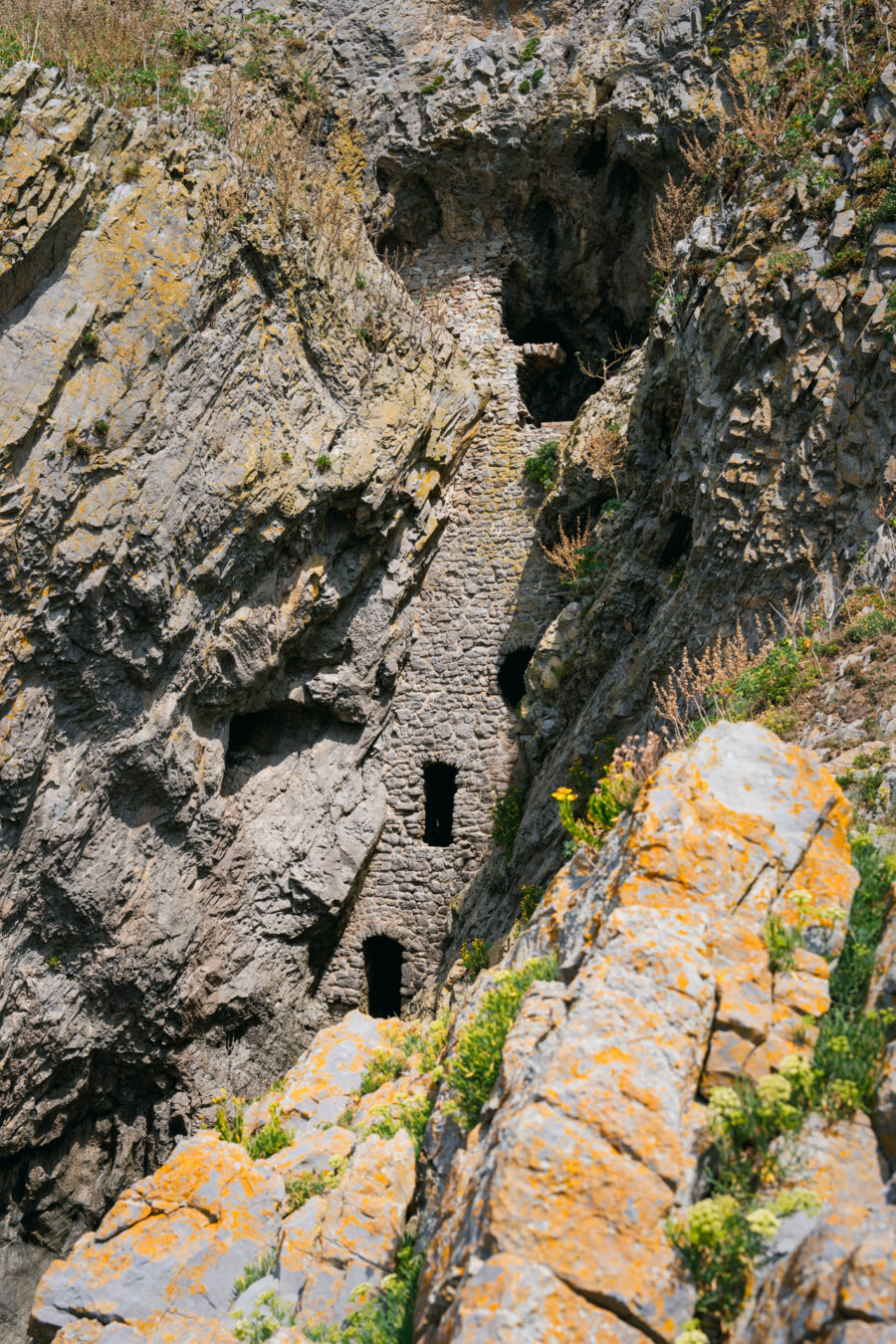
Instead, I recommend making your way back and continuing along the narrow dirt path to get closer to the beach as possible. At some point, you will need to climb down to reach sea level. I found it easiest to follow the wall of rocks on the right until I reached a small open cove with white pebbles — an ideal spot to access the beach. There is no single easiest way, so take your time and choose the route you feel most comfortable with.
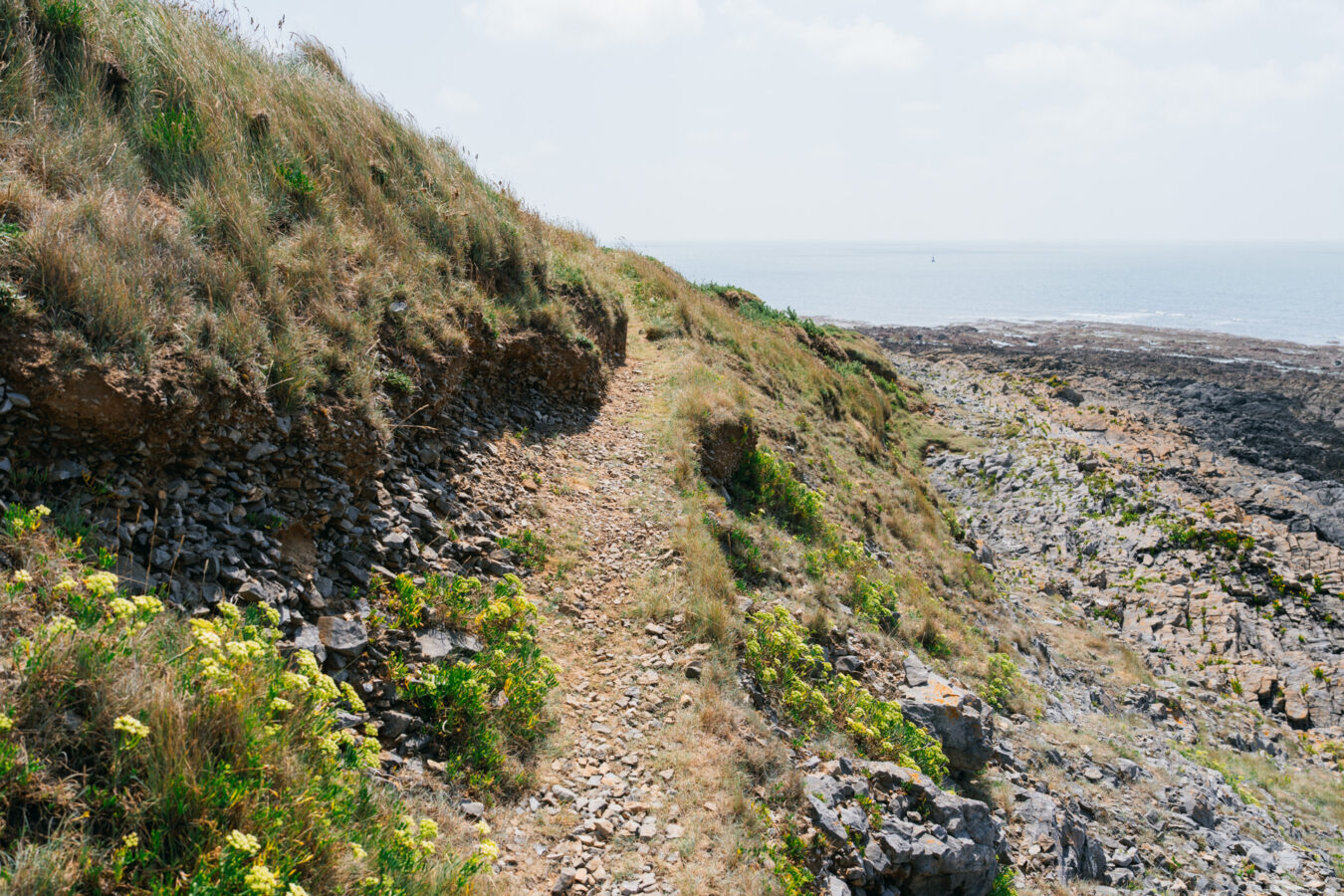
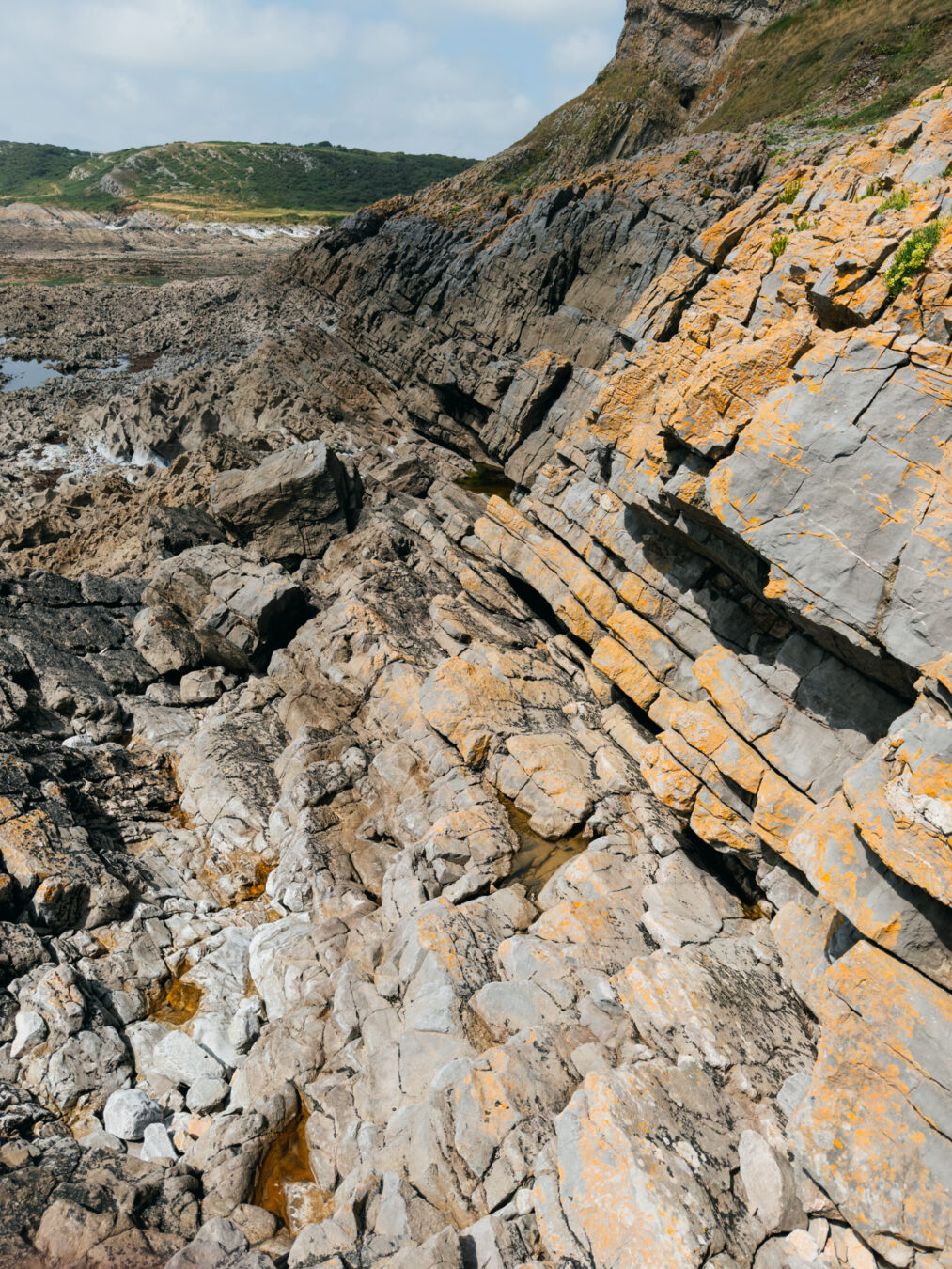
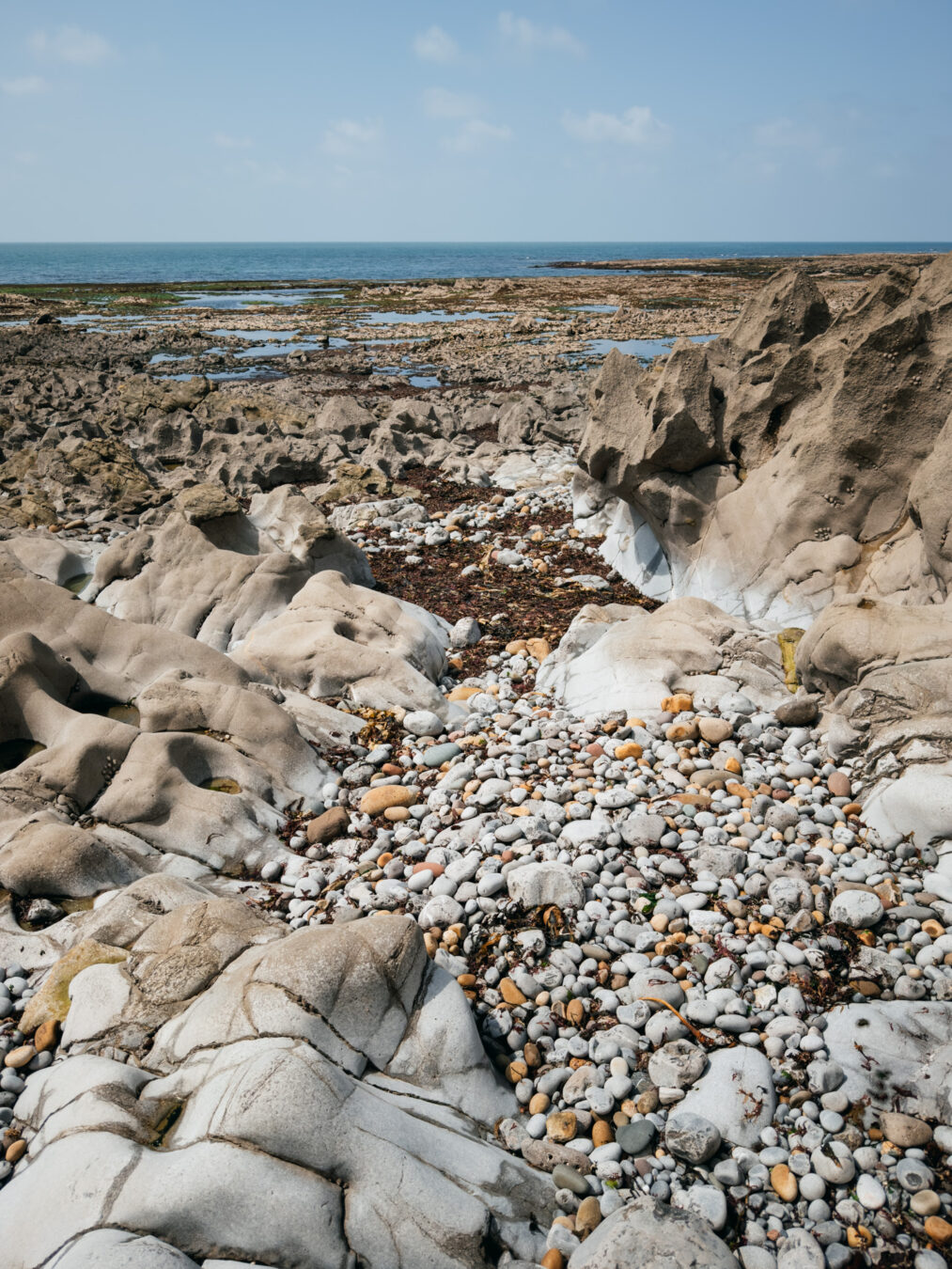
Once on the beach, continue north, navigating patches of pebbles, seaweed, and small rock pools. Take care, as the pebbles shift easily, and seaweed can conceal slippery stones or pools of water.
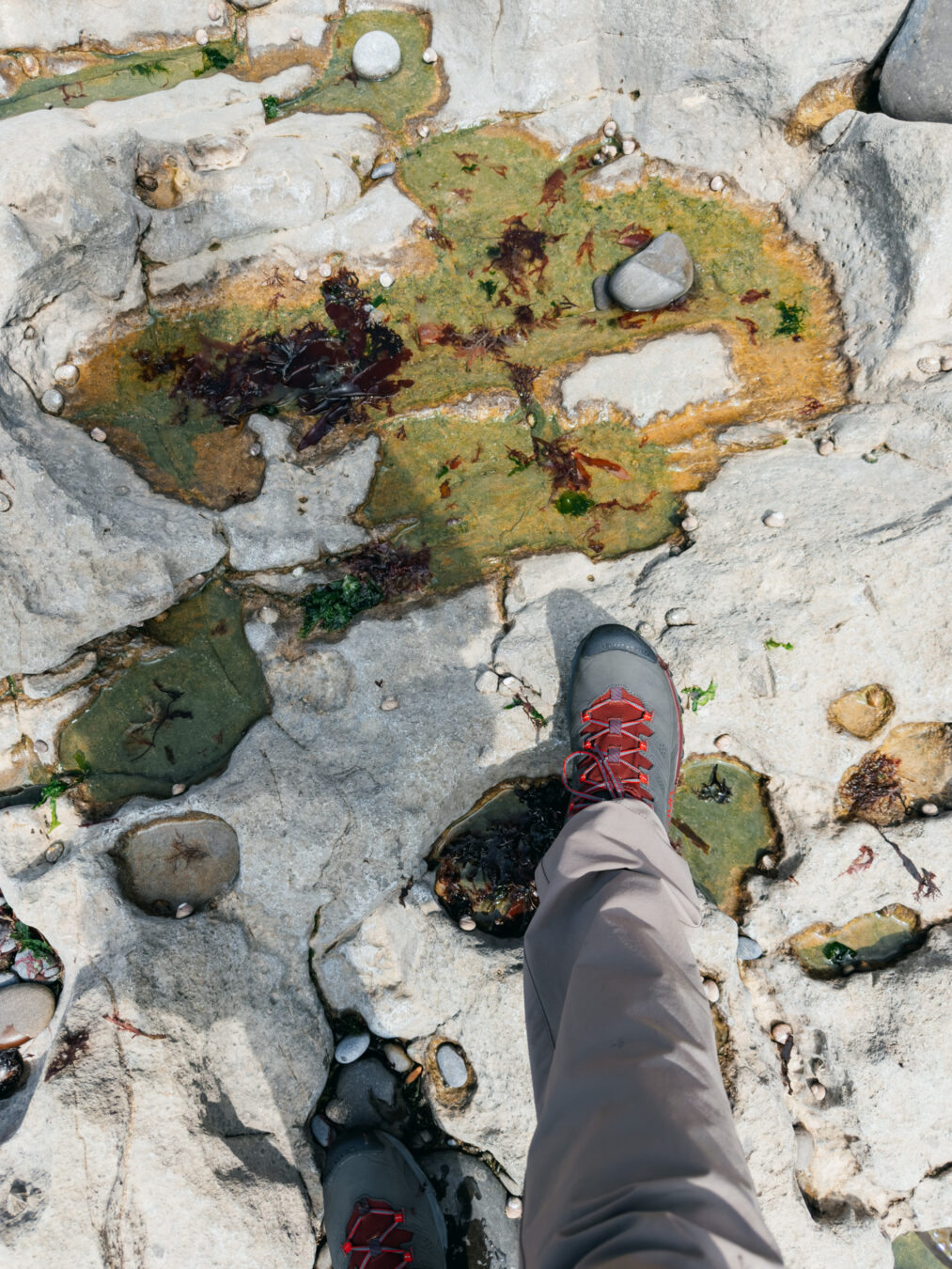
With care and patience, you will eventually stand before the cave. Approach it cautiously, as there can be significant amounts of water hidden beneath blankets of seaweed.
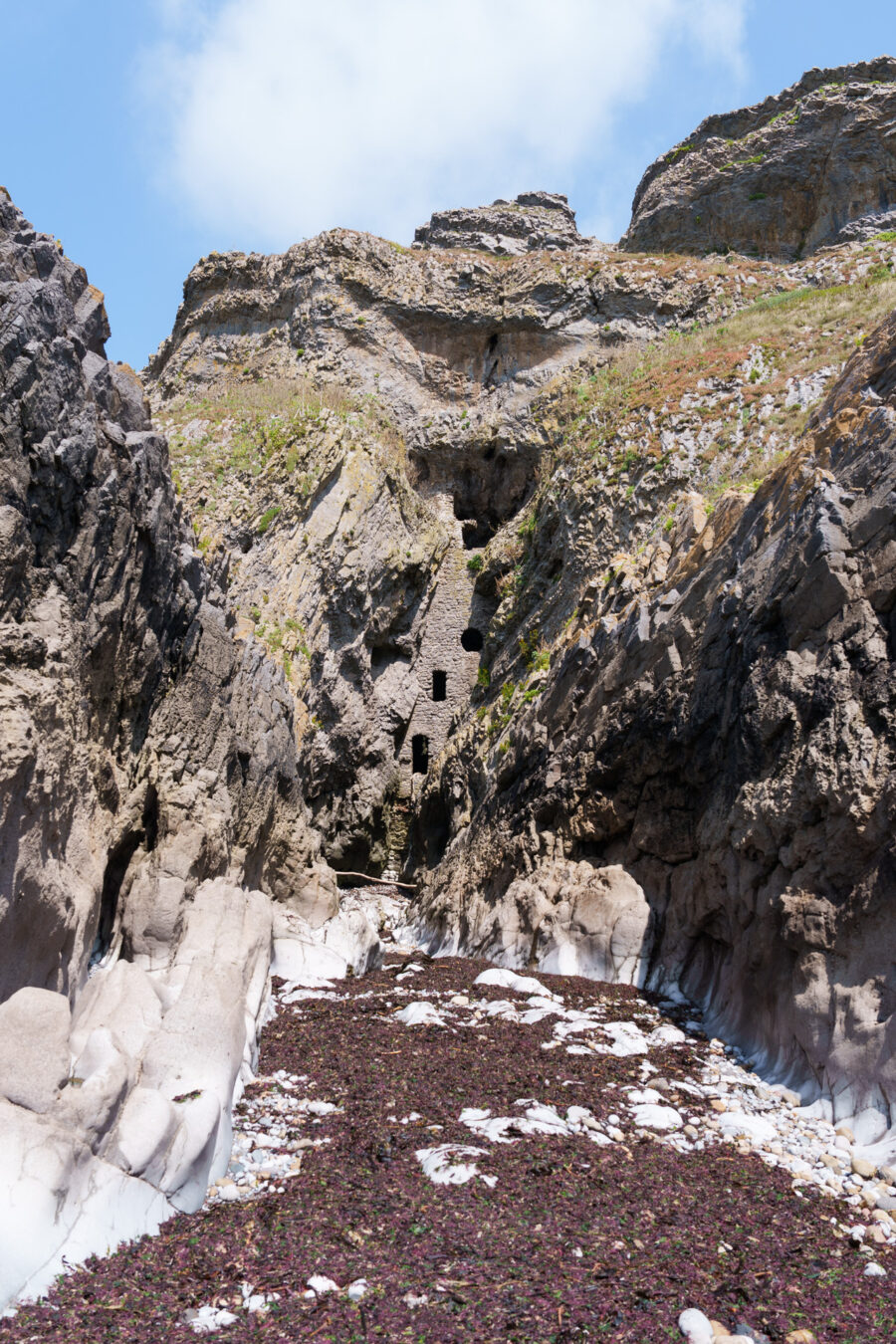
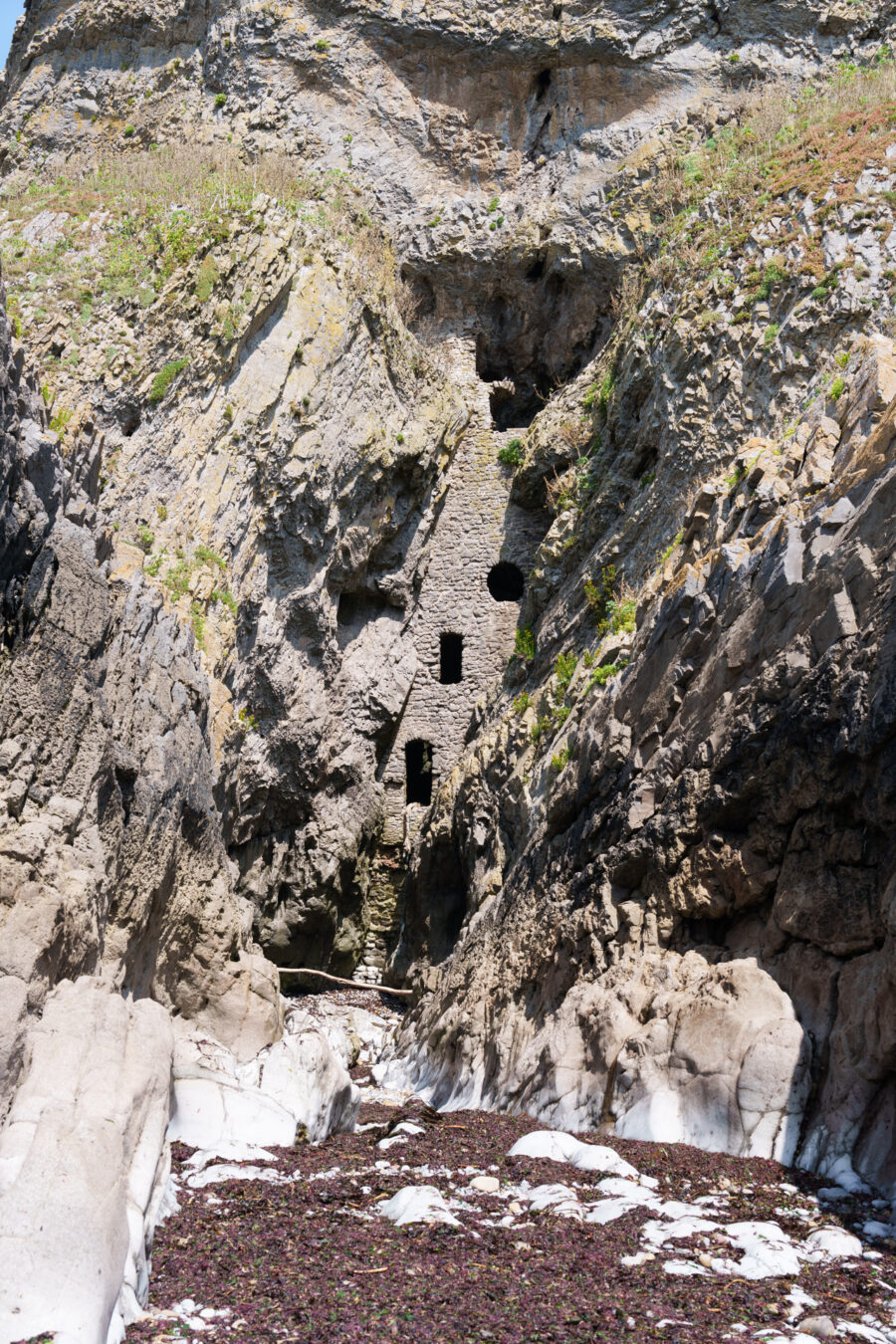
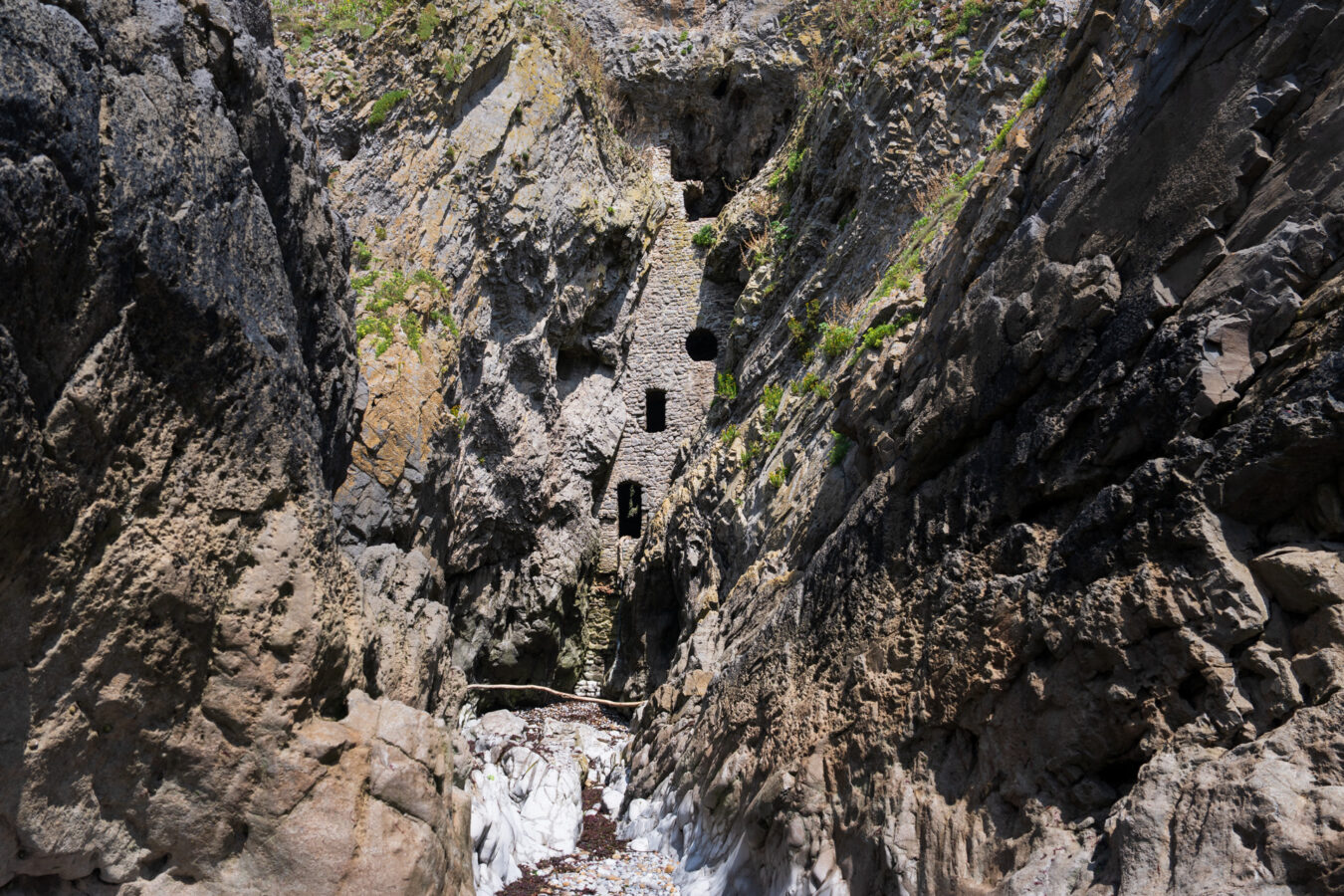
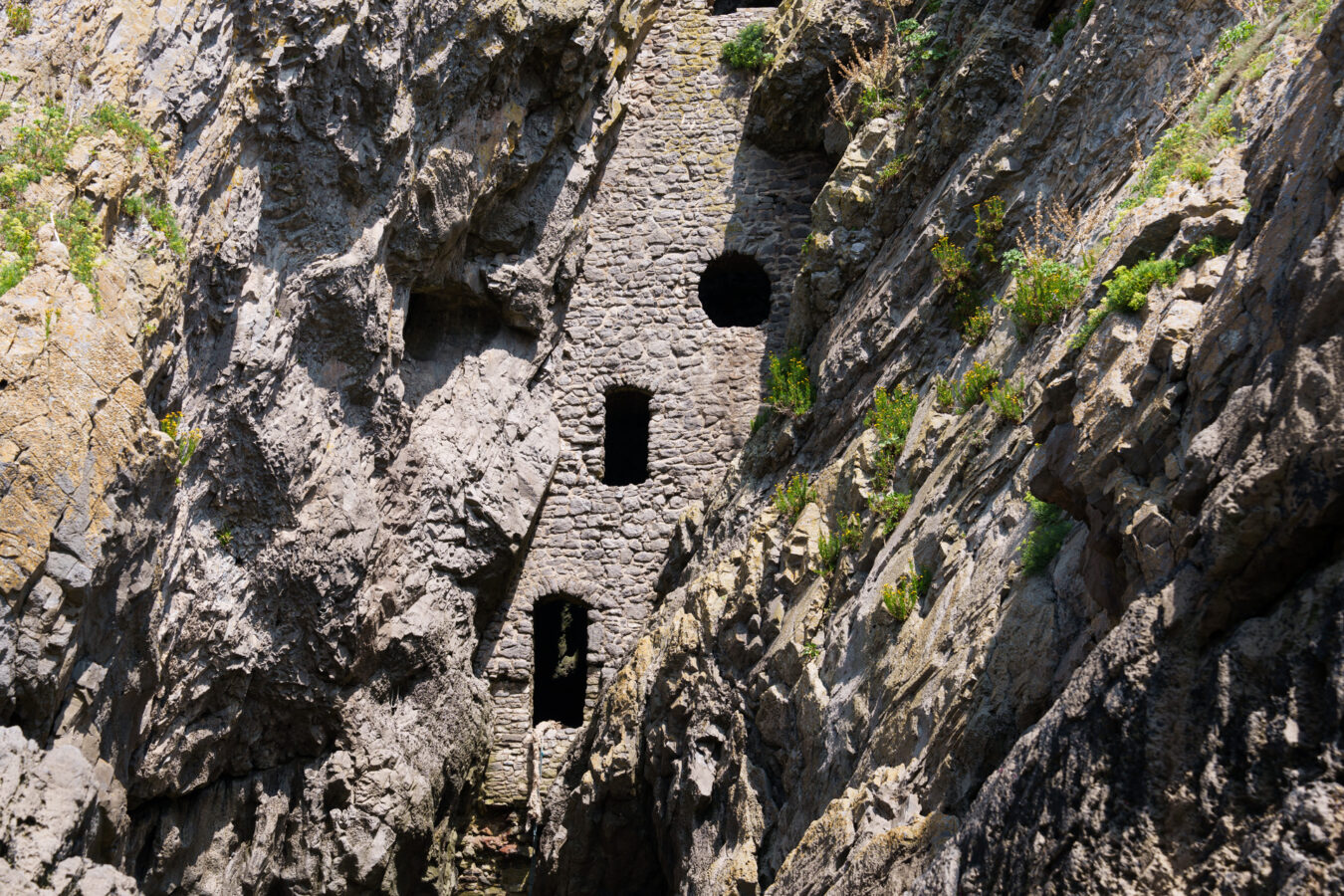
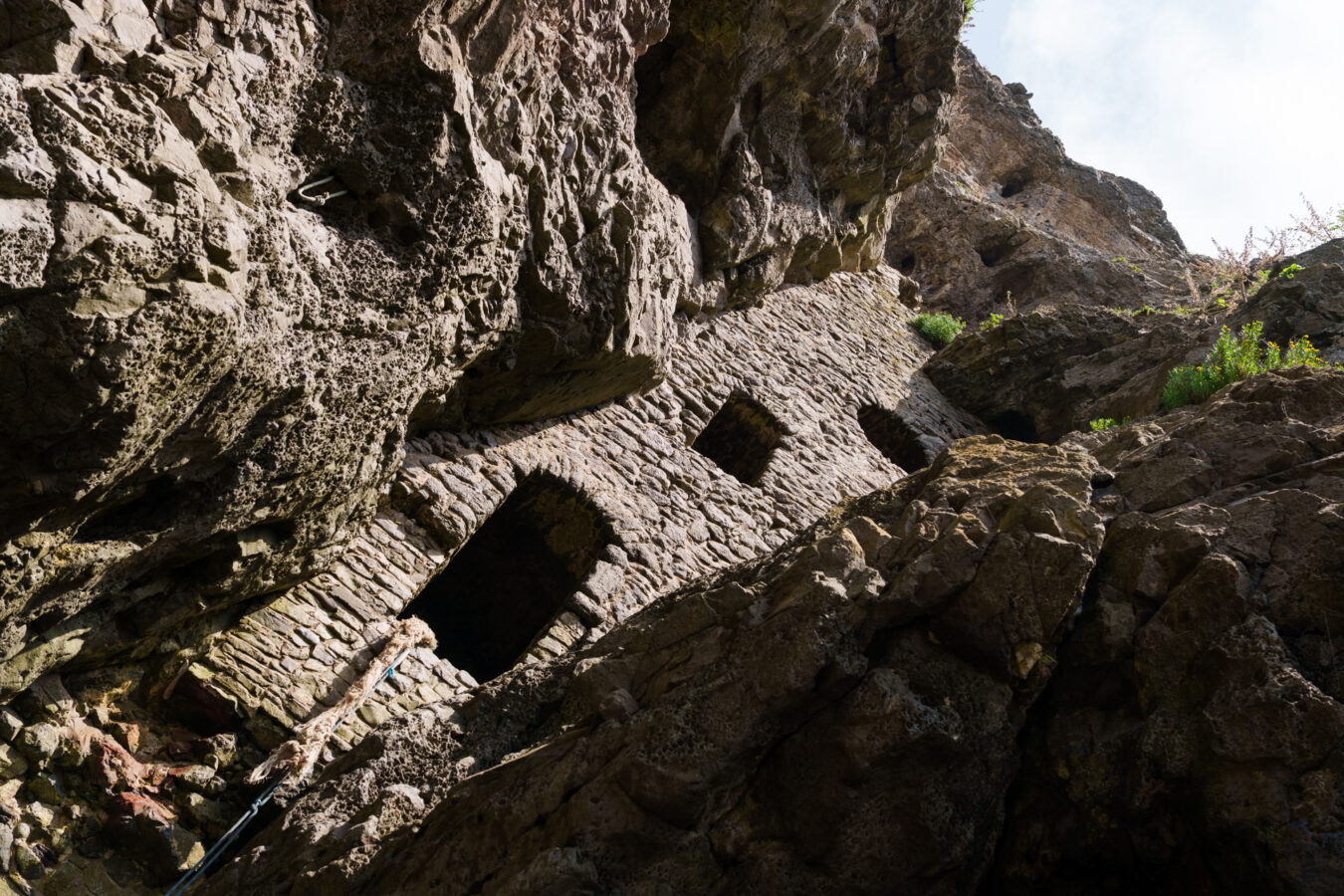
Culver hole history and legends
- Culver Hole has attracted many stories, the most notable being its supposed use as a smugglers’ stronghold.
- However, very little evidence suggests it was designed for anything other than serving as a pigeon house, most likely built by a local lord to provide a supply of fresh meat. No evidence of human occupation (nor any buried treasure!) has ever been found inside.
- The word culver means “pigeon” in old and poetic English.
- The exact date of construction is unknown, but it is believed to have been built sometime between the 13th and 14th centuries.
- Some documents refer to the dovecote as “the castle of Port Eynon”, although no trace of a castle has ever been discovered in the area.
- Another story tells of a mammoth’s skull being unearthed, but then reburied because it was too large to remove. Once again, there is little evidence to support this claim.
- Source: National Trust Heritage Records
A long piece of wood placed horizontally suggests that explorers should not attempt to get closer, although there is no official sign. This contrasts with a rope hanging from the first opening, which seems to have been put there deliberately to help you get inside. Personally, as I was still recovering from a leg injury at the time of my visit, I did not feel confident climbing up — and I had no idea how long that rope had been there or whether it was still safely secured. A young couple who arrived shortly afterwards were also hesitant and decided not to risk it.
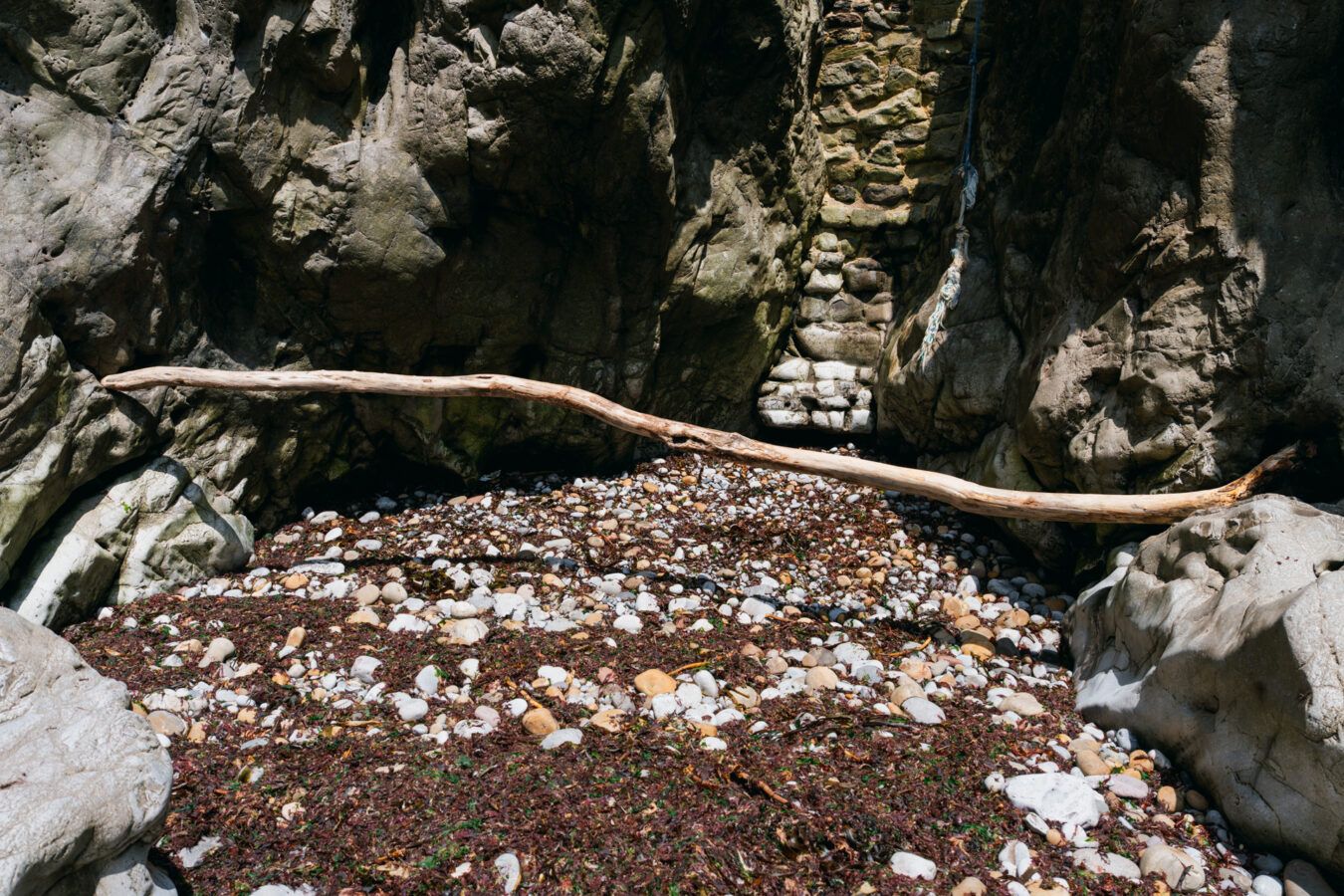
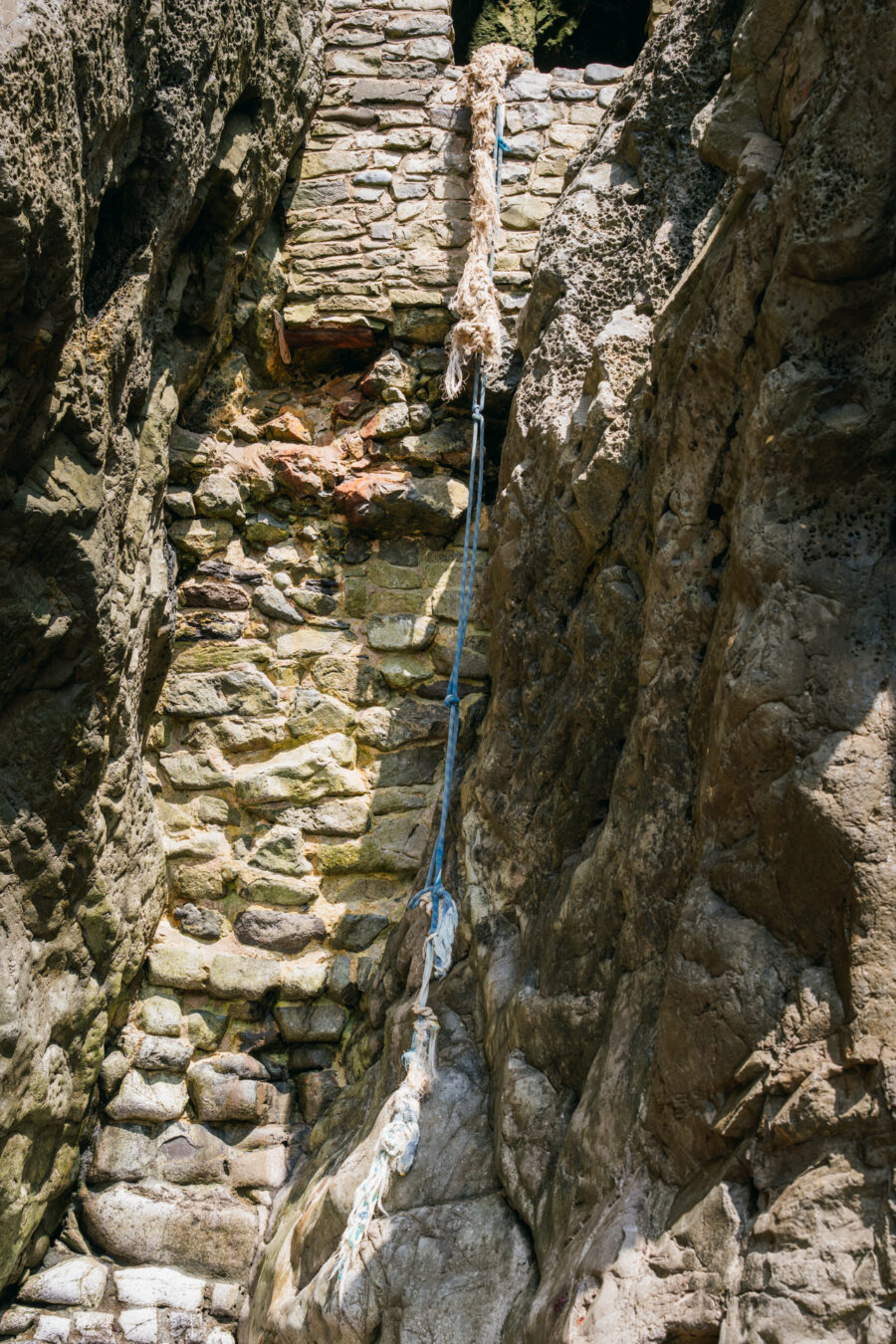
There is also a small opening at the bottom, which apparently in the past was large enough for a person to smuggle inside, but in this case it would have required some digging and removing of pebbles.
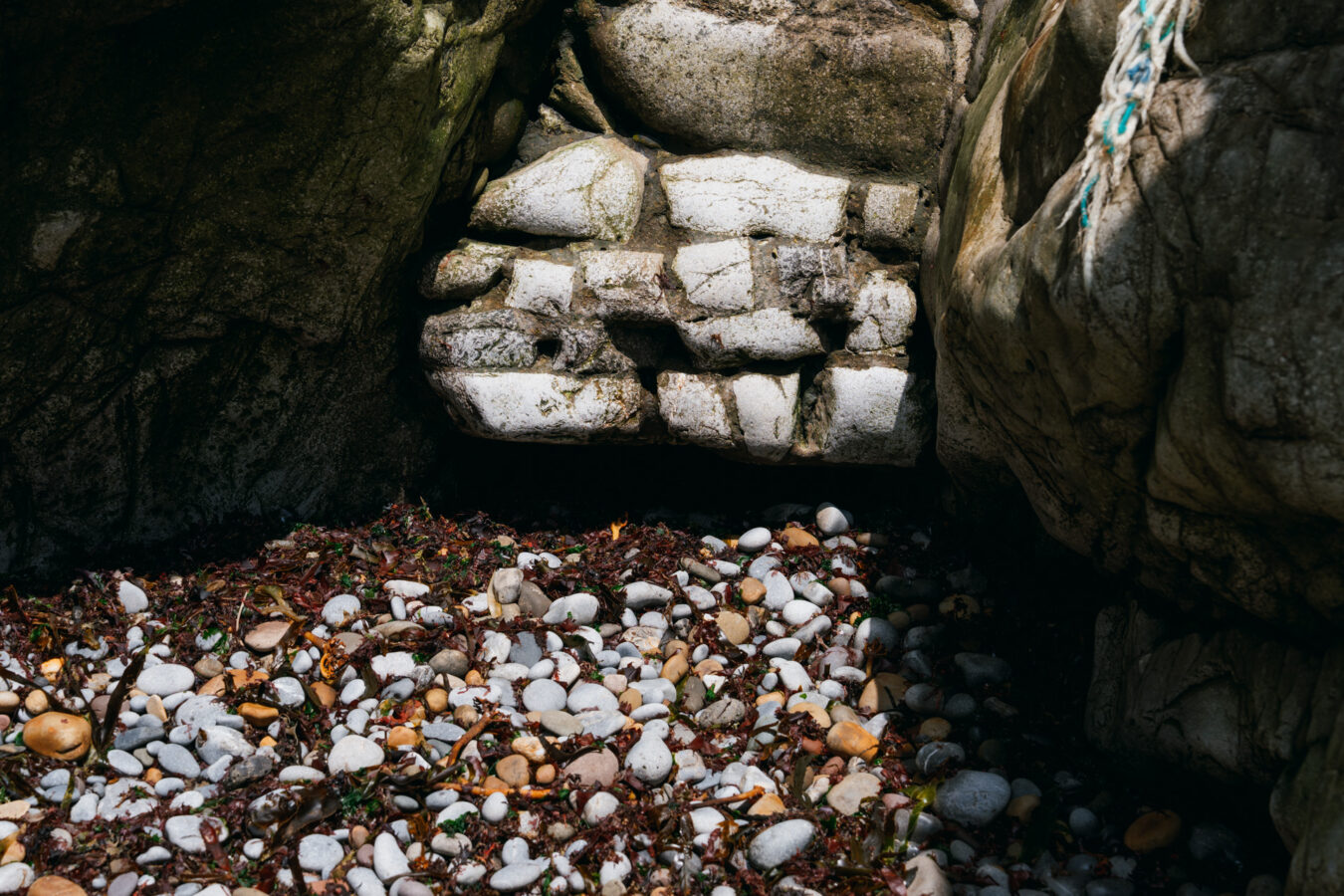
The thing is, if you read Chris Knight’s blog about Culver Hole, you will know that what you will find inside is mostly bird droppings, as it is a pigeon cove after all — hardly inviting!
After taking some photos (and a selfie!), it is time to head back. I recommend returning the same way you came, as you will already be familiar with the terrain. Once again, take your time navigating the rocky landscape.
